Information:
- Banff, Alberta
- Public – Daily Fee
- Stanley Thompson (1929)
- 6th in Canada (ScoreGolf)
Two years after Stanley Thompson built Jasper Park Lodge, the ‘Toronto Terror” headed three and a half hours or so south to Banff, another mountain town in Alberta to design Banff. As is the case with JPL, Banff is world-class yet again. The course is sandwiched between the Bow River and Tunnel Mountain on a surprisingly flat piece of land, vaulting it onto the short list of the best flat courses in the world.
The modern routing is slightly different than the original routing. Hole 15 used to be hole 1, which means hole 14 was 18. The current hole 1 was hole 5, and 18 was hole 4. The infamous “Devil’s Cauldron” par 3, 4th was once hole 8, and came much closer to the middle of the round. The original routing improves the “flow” and overall feeling of the course and arguably makes it better, but we’ll review the current setup!
The course starts out with a pretty basic, 414 yard par 4. The tee shot is straight, with some mounding that separates the hole with the first hole on the Tunnel Nine (the other nine here, which I have not played), and forest right. There’s a bunker in the driving zone left, but three wood takes it out of play.
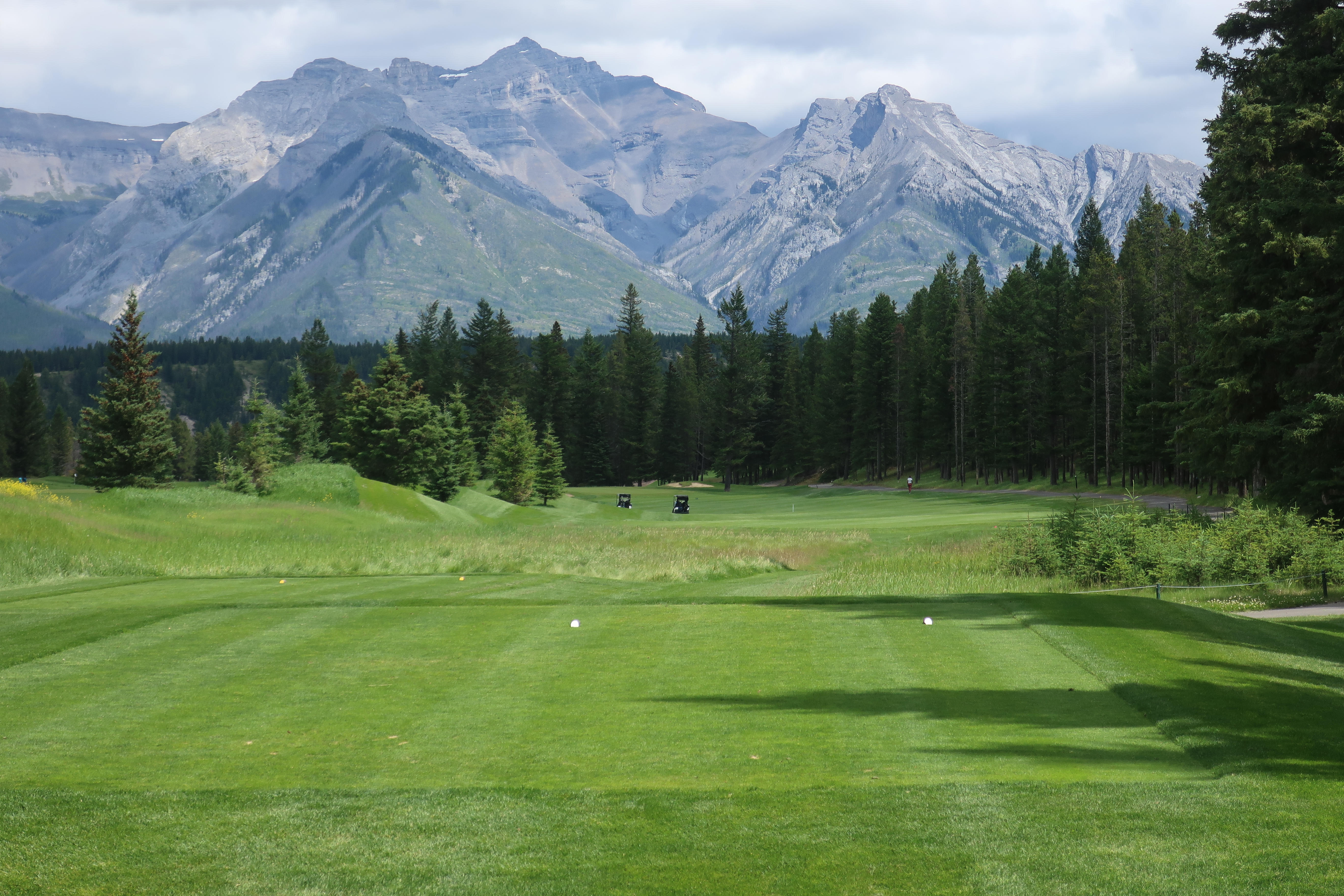
There’s some criticism of this hole for being bland, and while that may be true, even more-so considering it preludes the fantastic stretch of holes 2-5, I don’t mind hole 1 at all. If you were to ask me, I don’t think Banff has a bad hole at all, maybe not even a mediocre hole. The green complex here is suburb and is a good introduction to the course.

The second is a 171 yard, par 3 playing slightly uphill. In 1919, 10 years before Banff opened, Donald Ross originally had 18 holes designed here before Thompson ripped up most of the course. Rumor has it there’s 2 original Donald Ross green complexes (with a little bit of Thompson sprinkled in) that remain: holes 2 and 6.
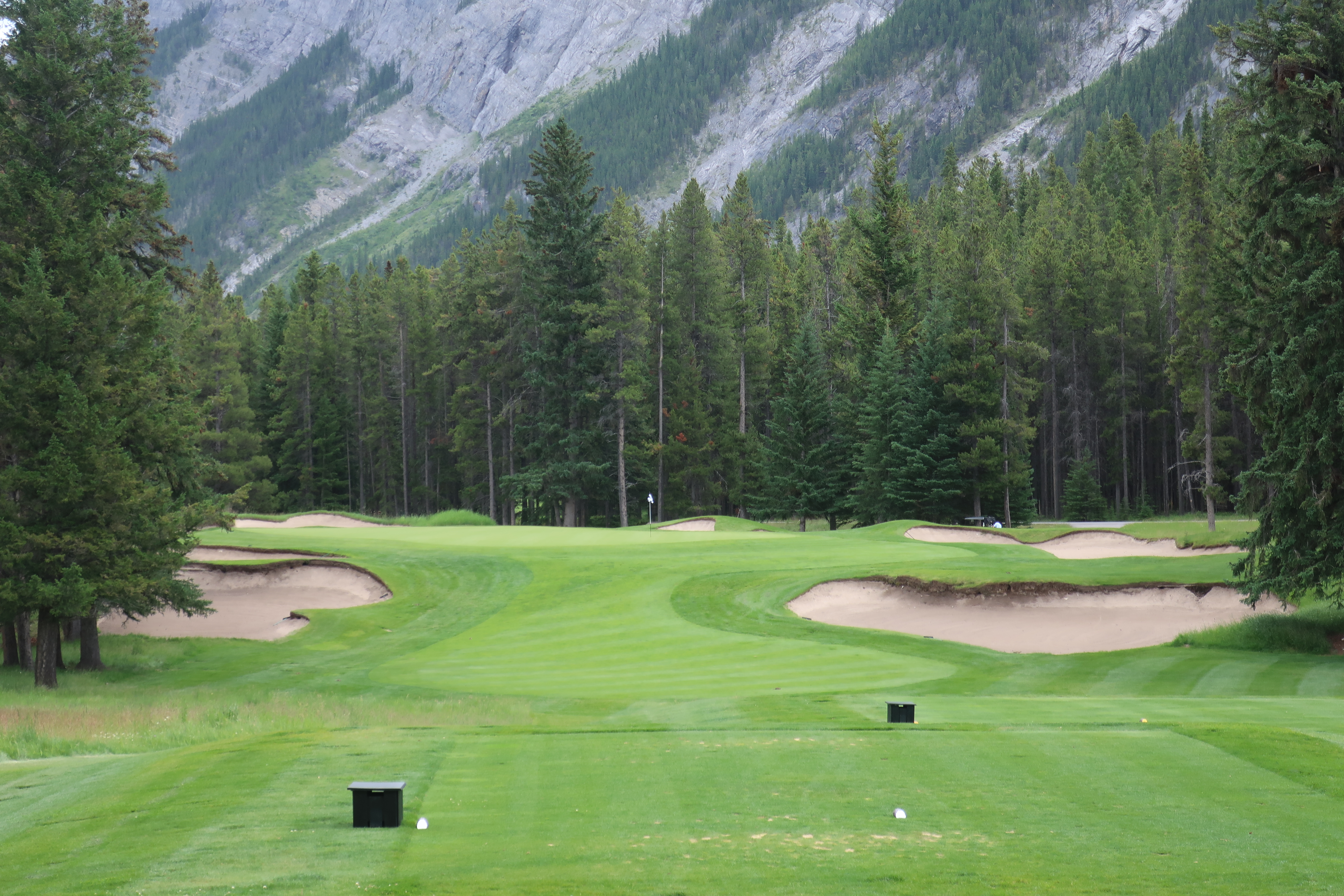
Hole 3 is a really good par 5, playing 2 yards under 530. Banff’s elevation is somewhere in the 5,000 feet above sea level range, so it’s easily reachable, but it does play slightly uphill so it probably plays the number or just a bit under. A bunker is left, however for the modern era it’s not in play.
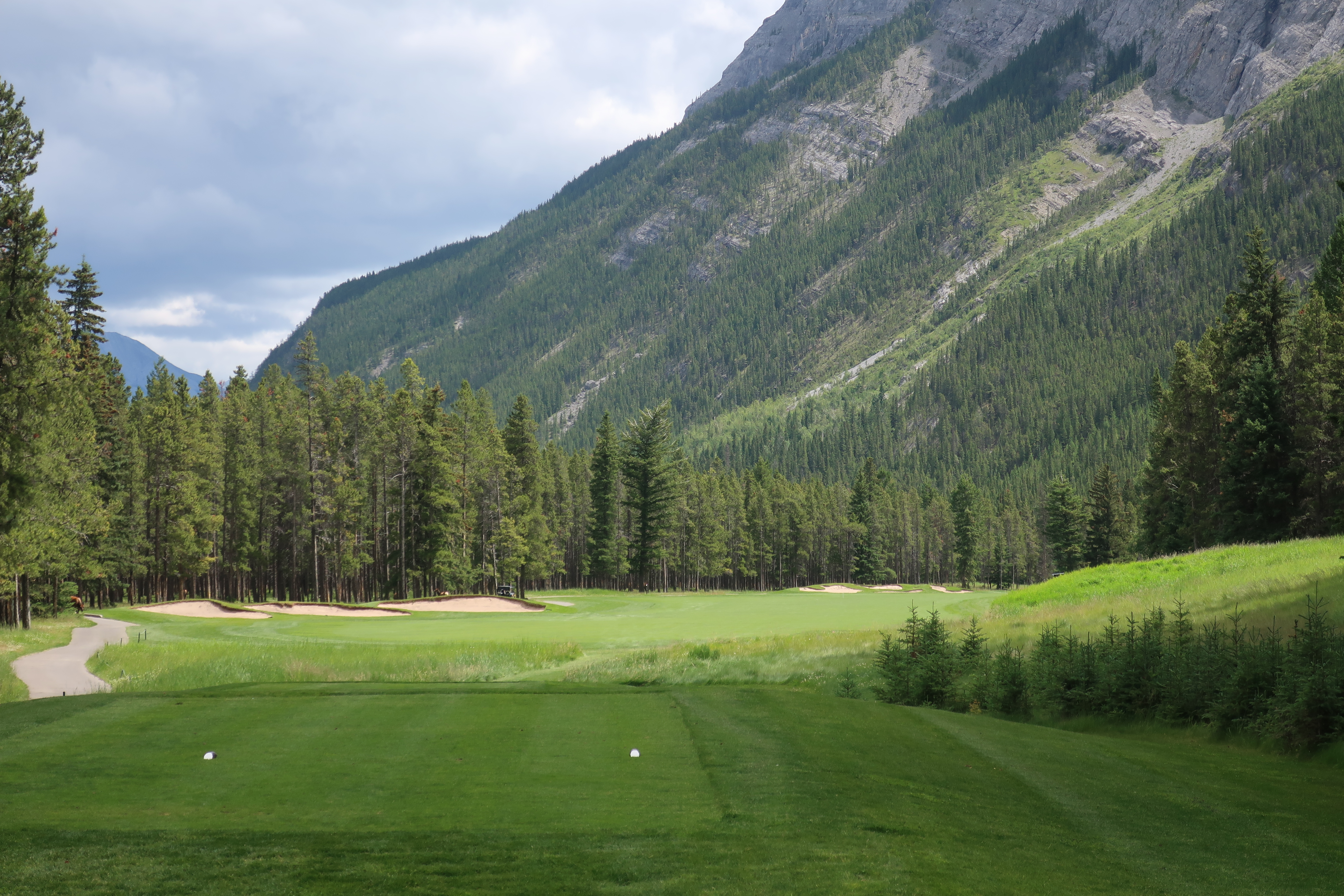
A cool green complex in the layup area is one of the holes highlights.
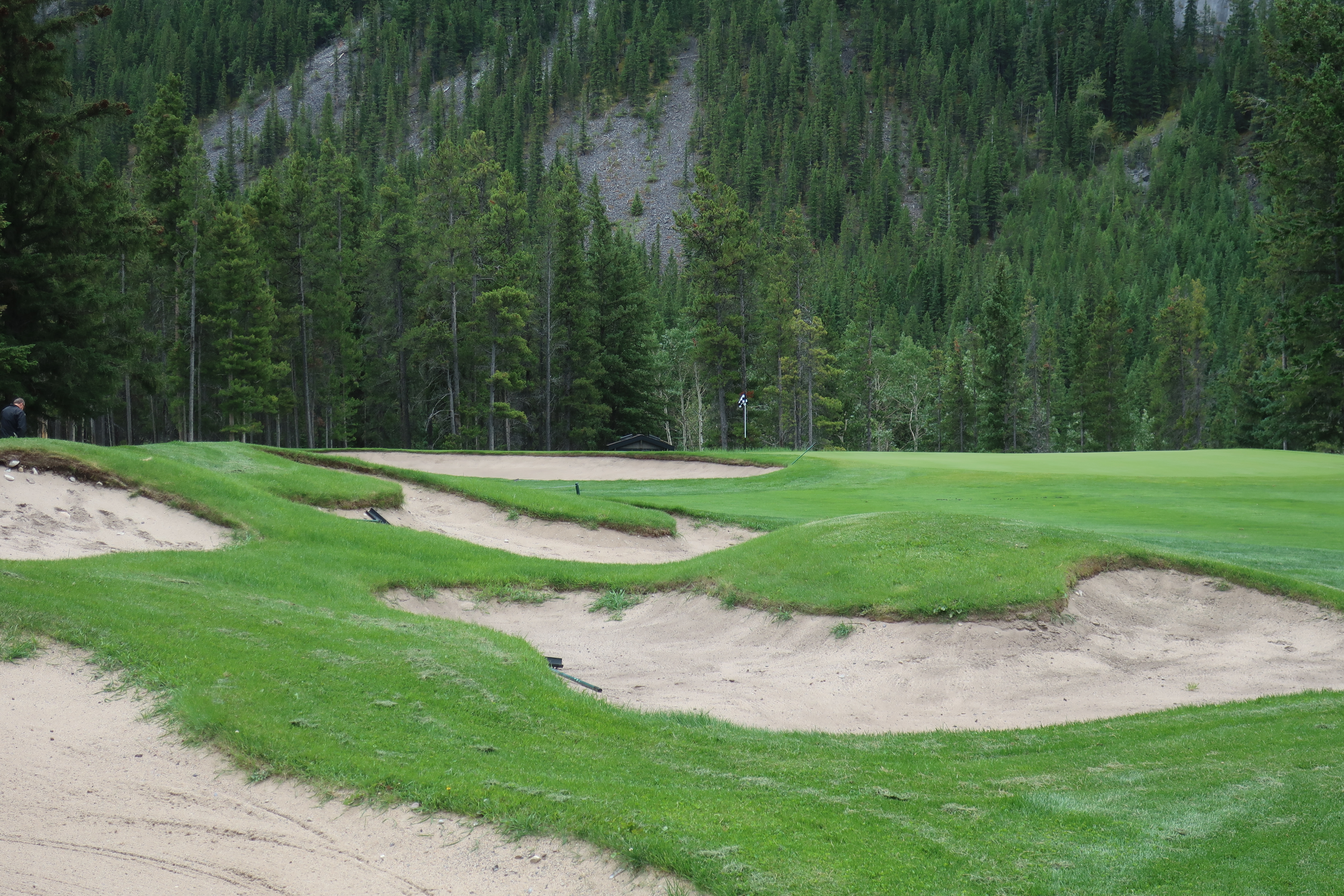
The real beauty of hole 3 is the green complex. It’s close to 50 yards long, and everything slopes towards the back left off the mountain.
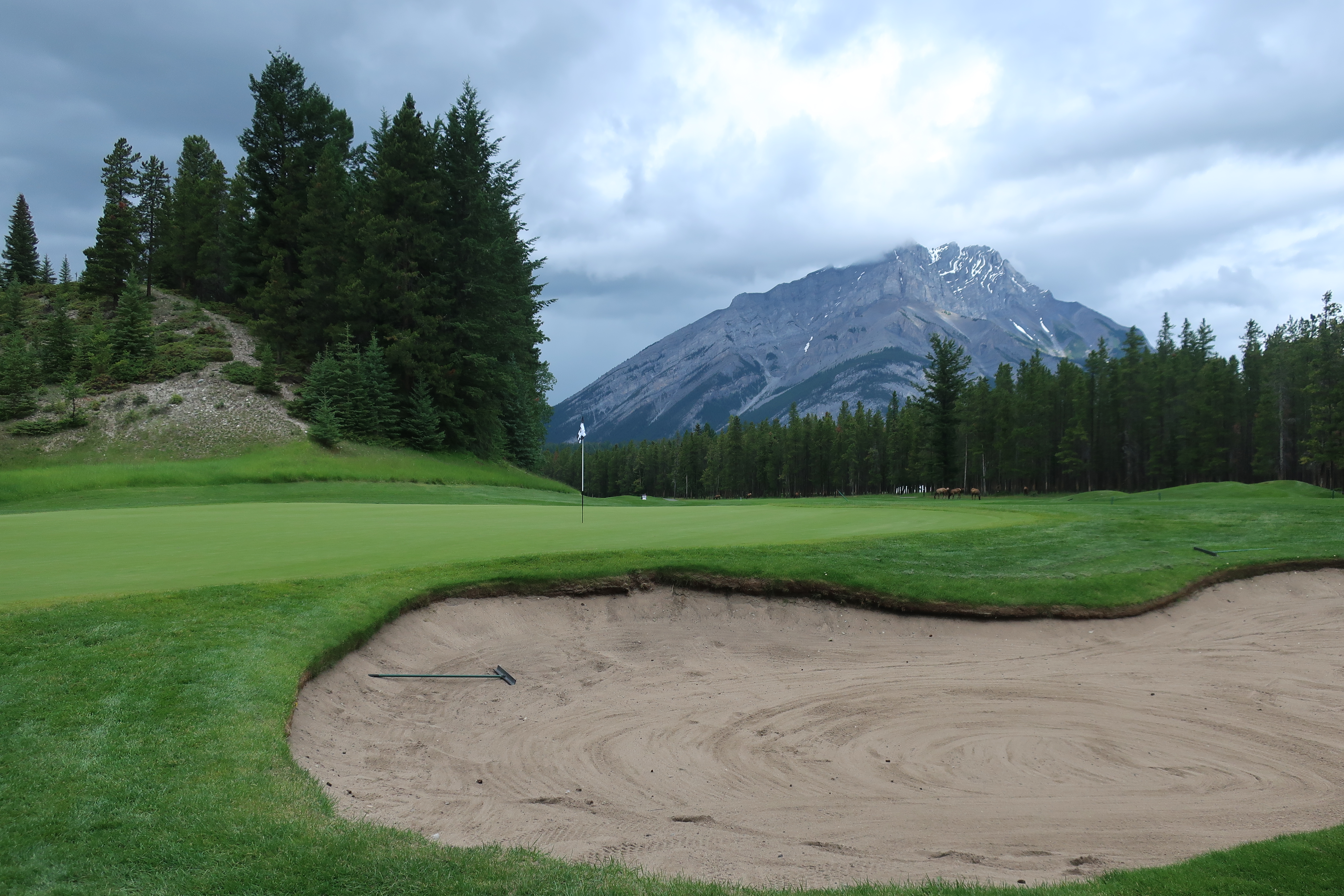
The fourth is the world-famous “Devil’s Cauldron” par 3. 192 yards on the card, playing over a glacier pond, the tee shot plays a club or two downhill to a natural punchbowl green with some fantastic Thompson bunkering. Truly one of the world’s best.
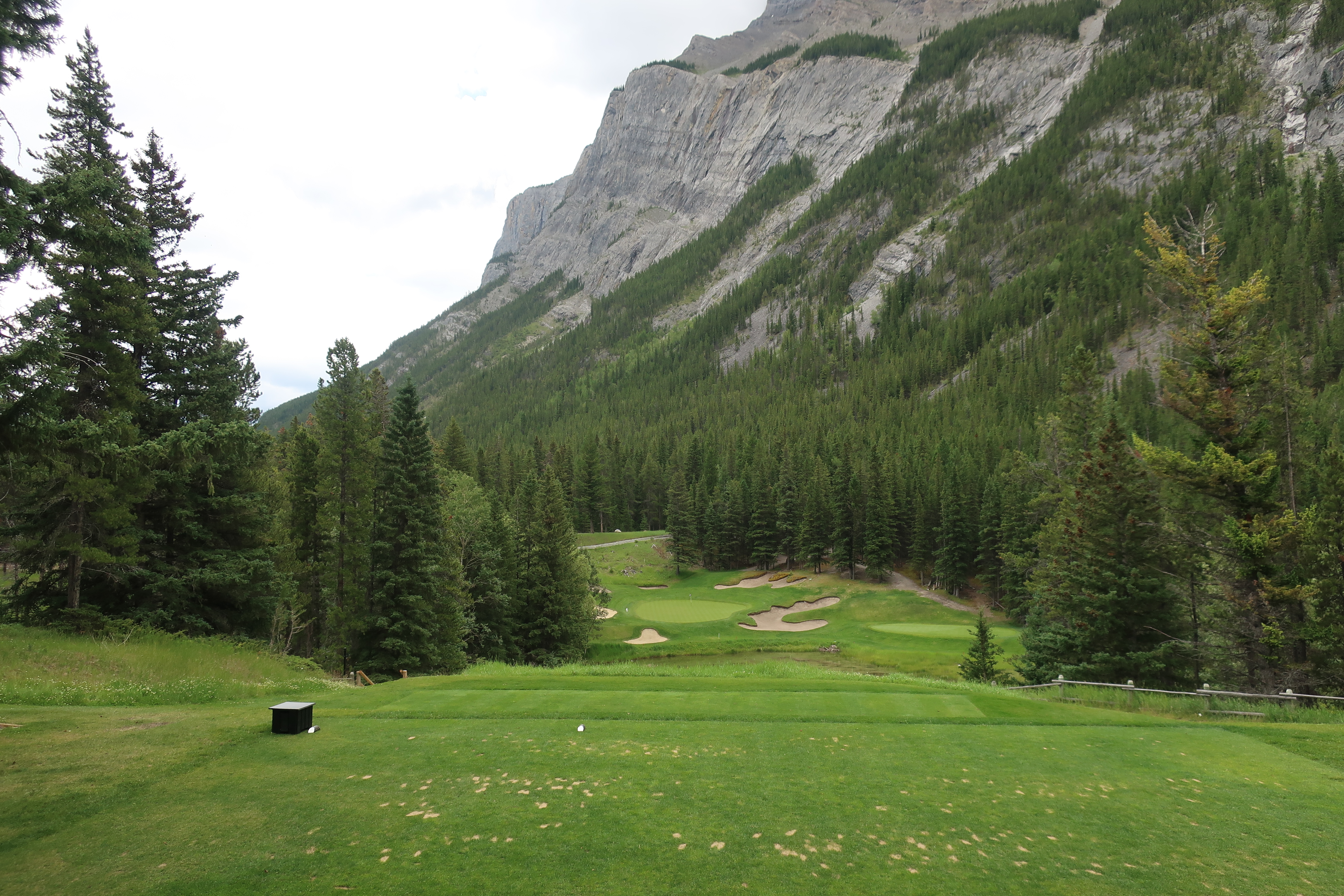
There’s a tee box down the path, to the right, so when you go I suggest you hit a ball from down there. It plays closer to 160 yards, and some even think it’s the original tee box, although I don’t really know. Regardless, it’s a cool little easter egg!

The fifth is one of my favorite holes here, and there’s no real reason other than it’s a solid hole. I just have some weird liking to the 424 yard par 4 doglegging around a bunker left that is a very big carry from the back deck.

I think I like this hole cause it’s sneaky tough. You really have to put together a good tee shot in the fairway and then a good short iron as the green is guarded left and long right by bunkering.
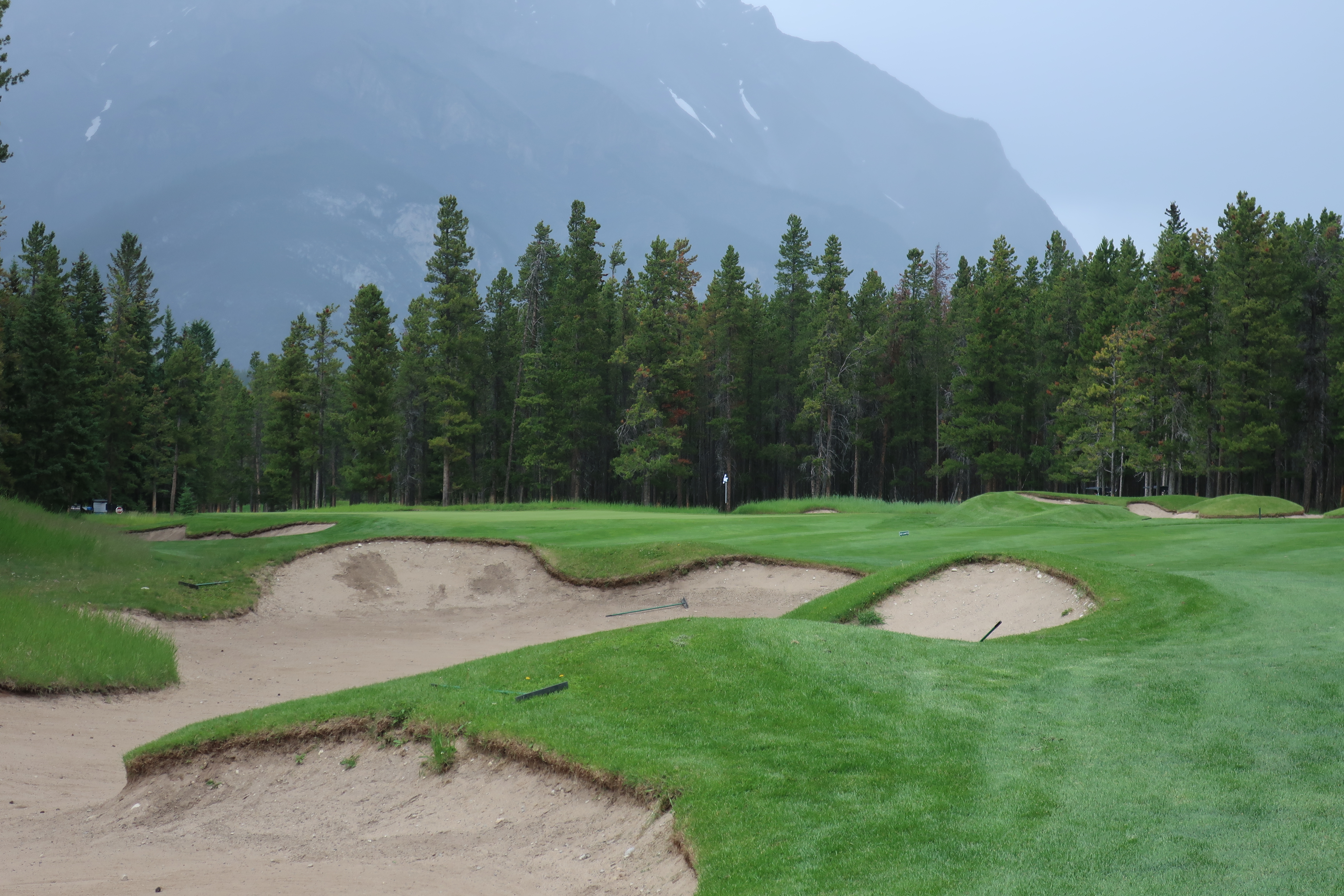
Again, some fantastic bunkering short right of the green here. Thompson knew how to shape things.
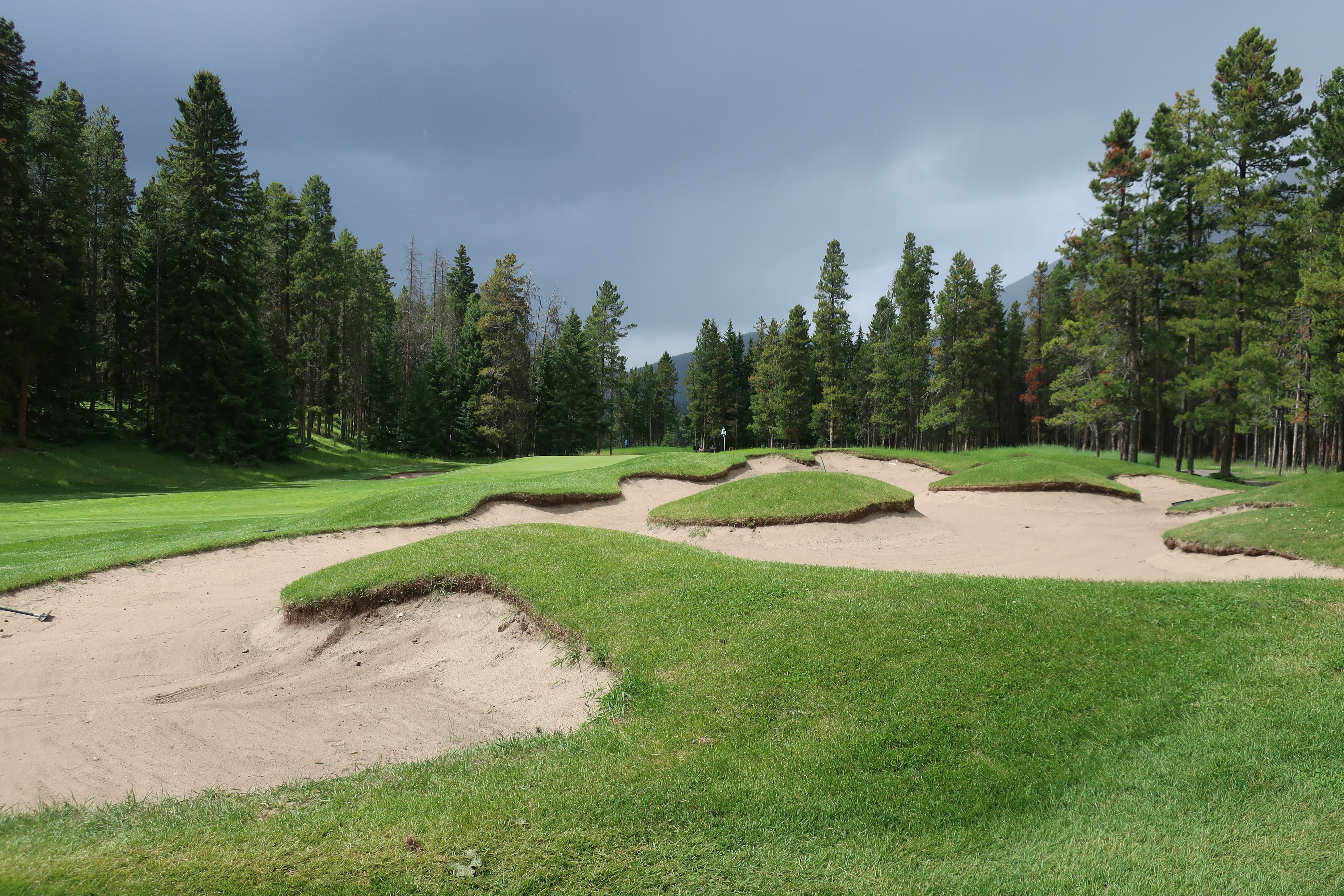
The 6th is a really intriguing short par 4. At 373 yards, it’s not quite drivable, but you can get close on a nice, warm day thanks to the elevation. The green complex, however, might make you think twice about that. First time around you might find this hole underwhelming as there’s no fairway bunkering and this is by far the easiest fairway to hit at Banff, and maybe in Alberta, but with a few rounds you start to recognize the genius of this hole.
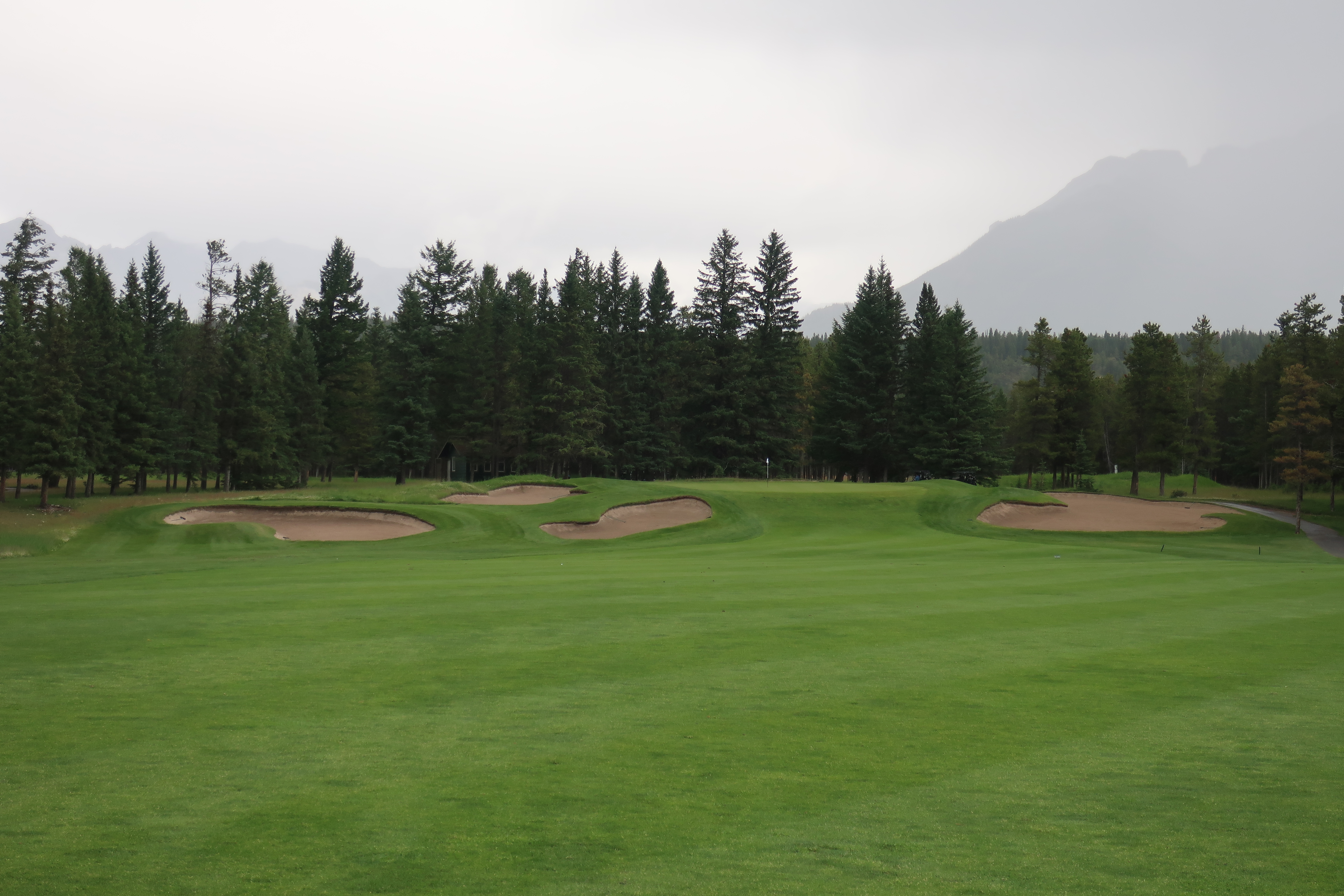
The pushed up green is certainly not ideal for a half wedge or pitching from below the playing surface, so you should think about laying up. It’s still a difficult wedge because it’s only 22 paces deep and likely 18-20 wide, but at least it’s a full wedge.
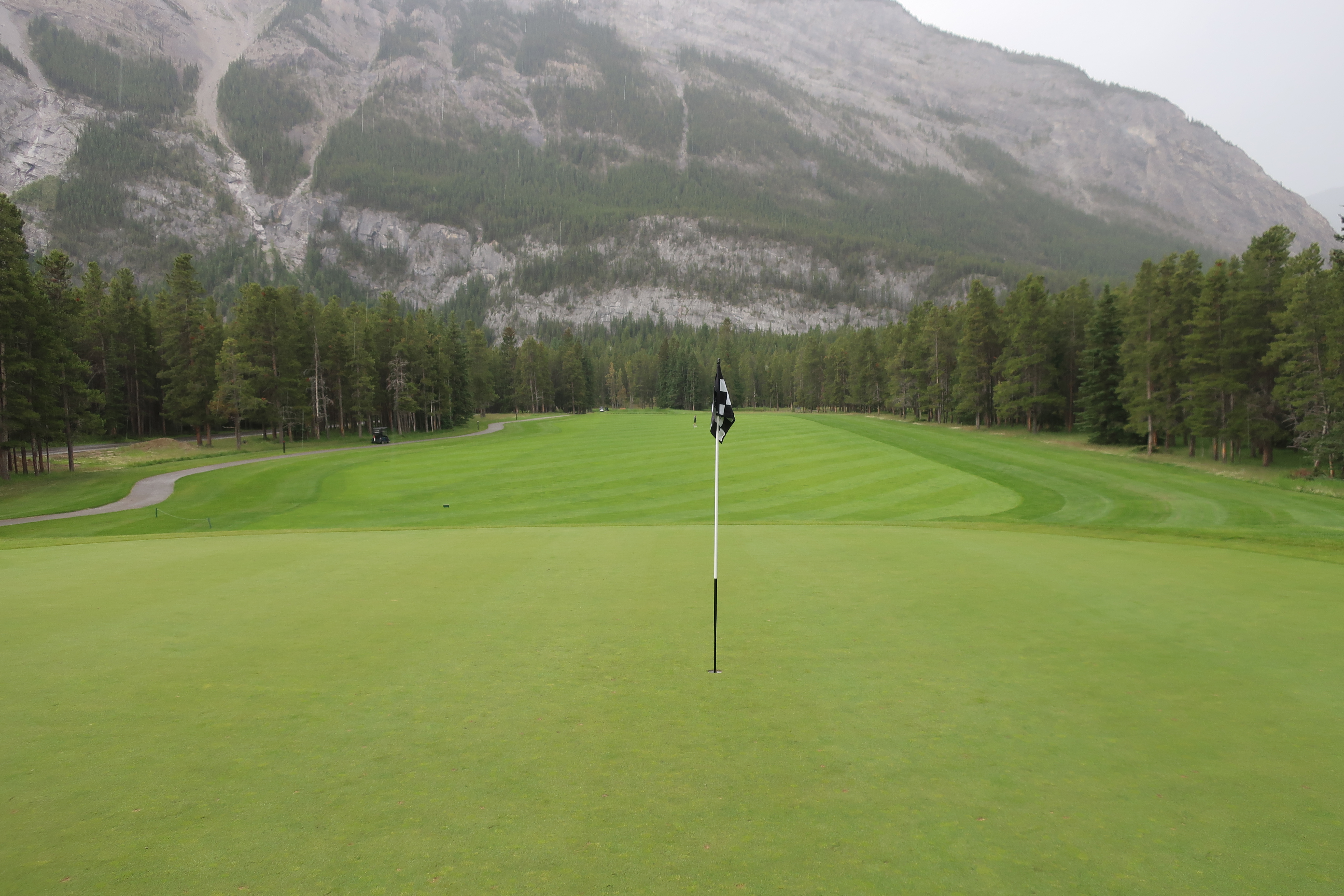
The 7th is a longer par 5, playing two yards over 600. A massive, and I mean massive bunker is left in the tee shot that is to be challenged if you want to have a better look at the green. The good news: it’s 260 or so yards to carry from the back deck, so even mid length hitters can probably get it over.
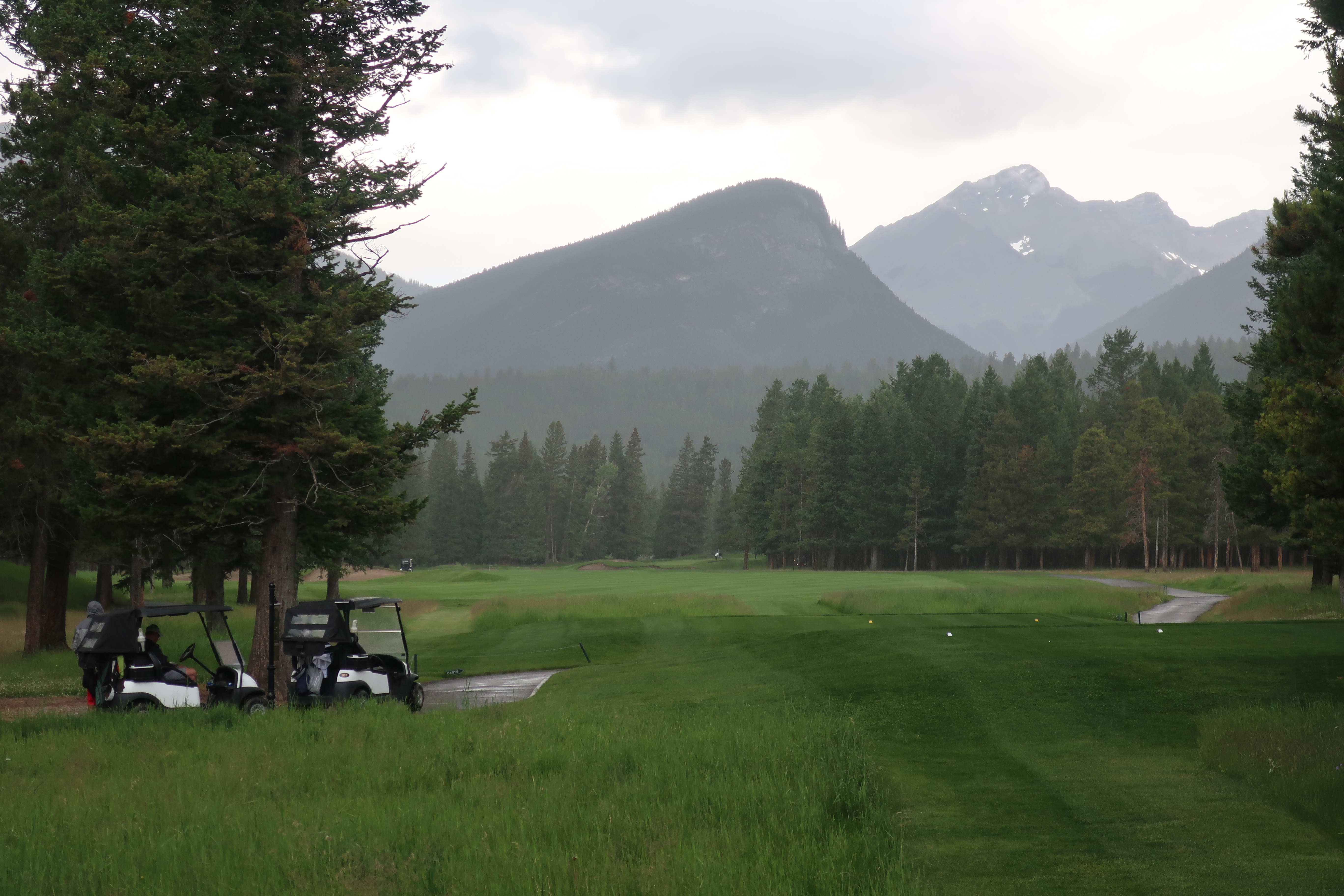
This is a great par 5 because every shot matters. If you’re going for it in two it requires two great shots, but if you layup, it still requires good shots.
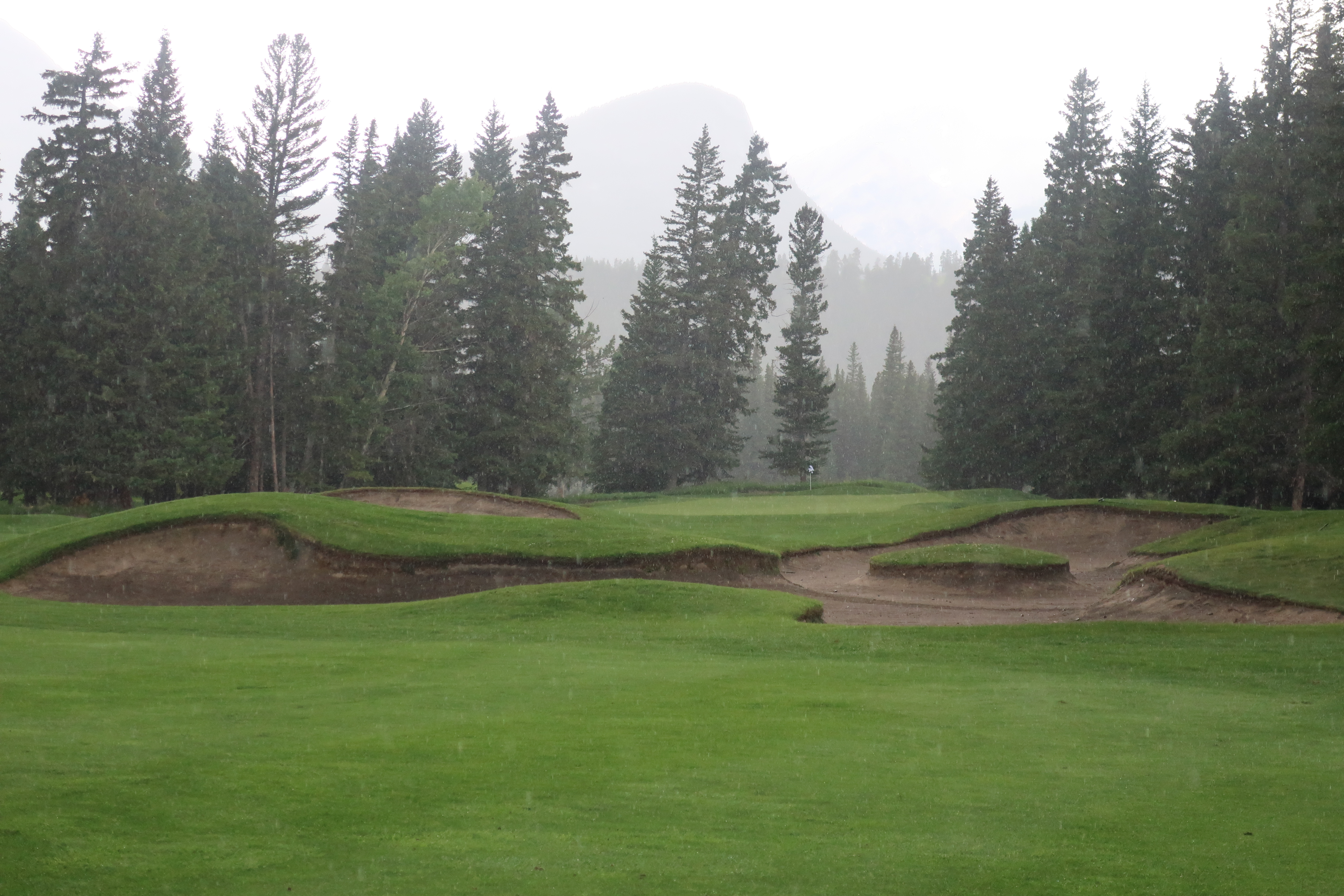
The green is a very skinny green complex, especially with three wood, hybrid or long iron if you try and go for it. It feels like a maze trying to navigate the seven or so green-side bunkers.
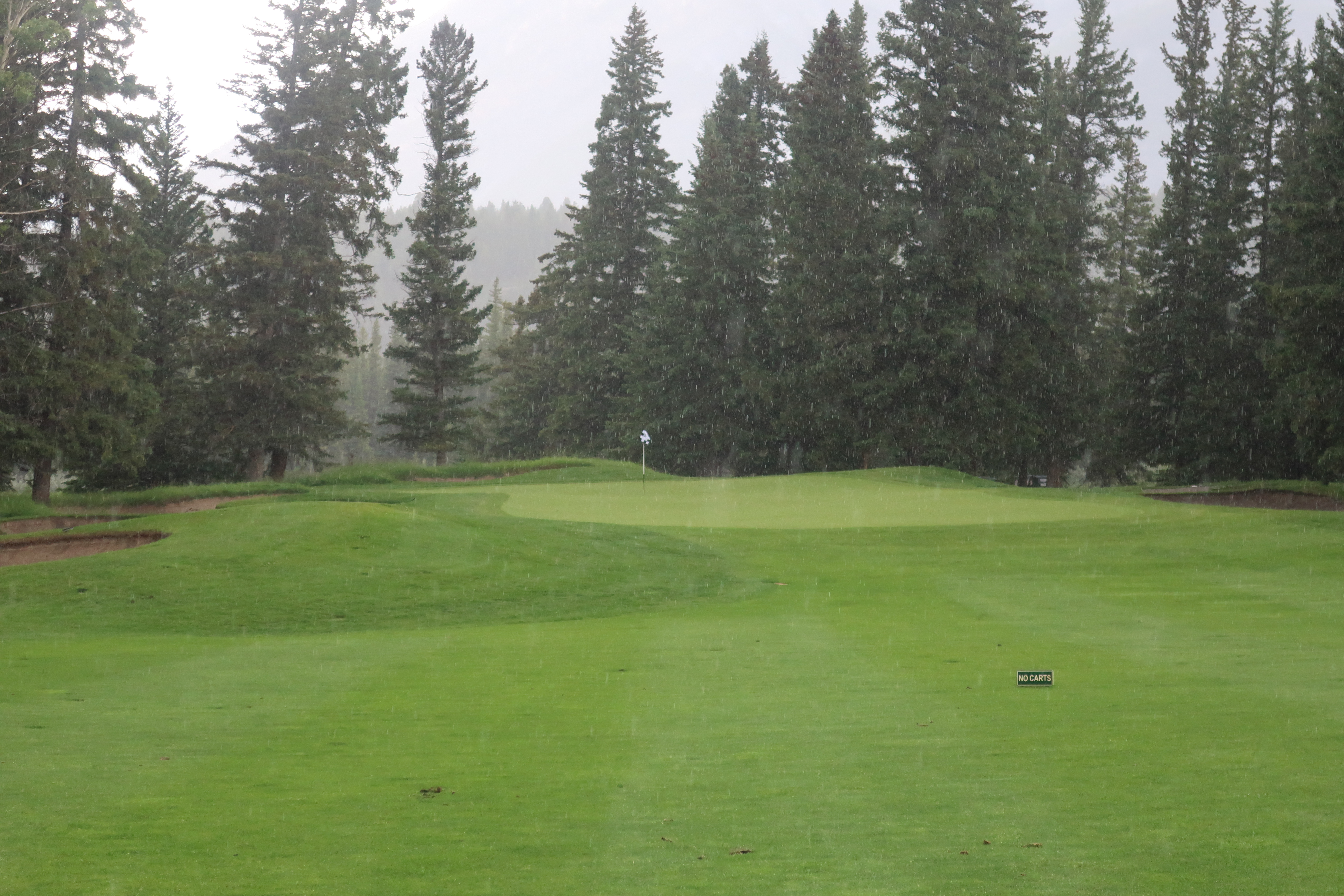
The 8th is a cool little short par 3, only at 150 yards off the tee. The Bow River does come into play short and right, so club selection is key. It can be difficult adjusting to the elevation, so put a good swing on it to avoid the water and a bunker long.
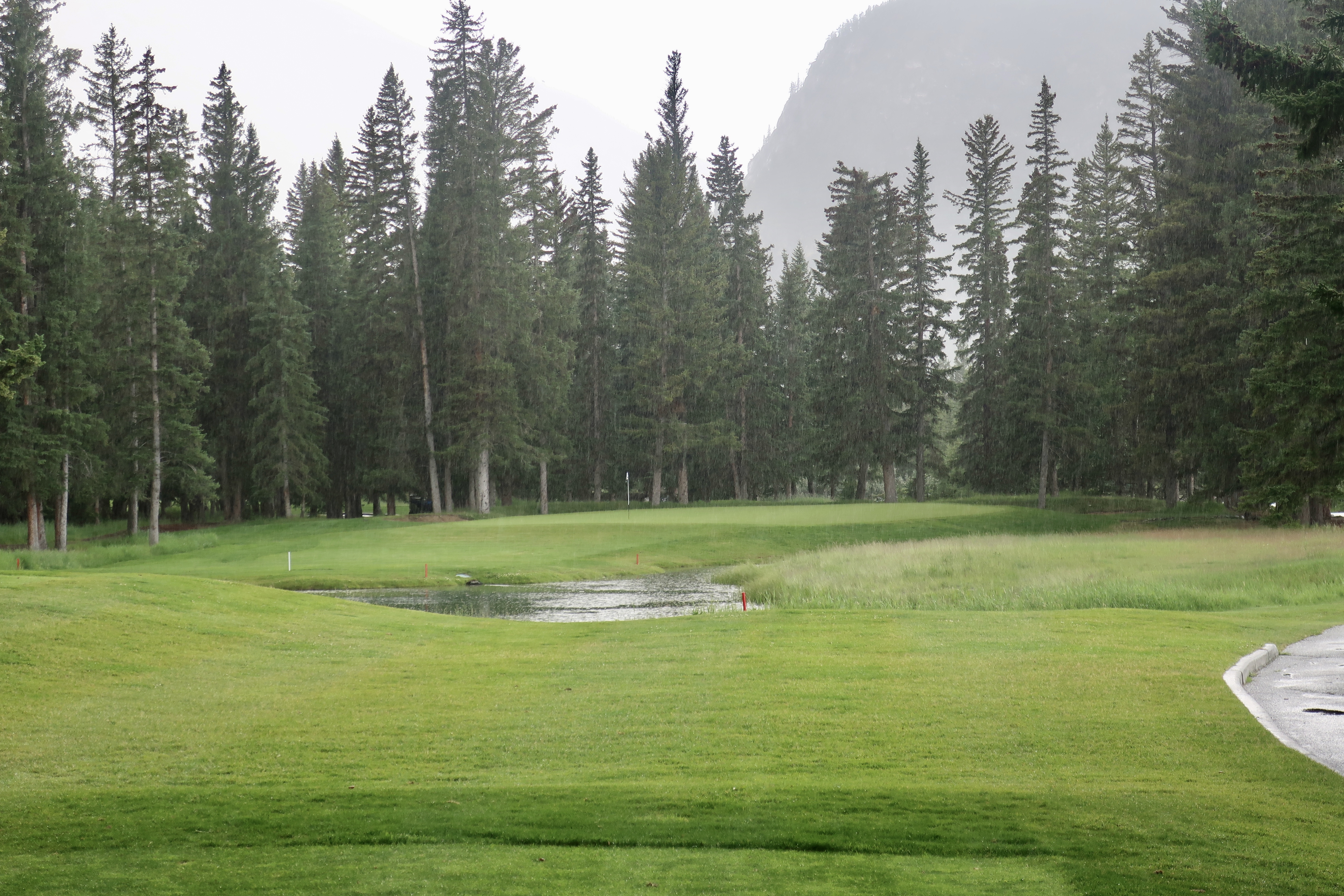
I absolutely love the 9th. At 501 yards, par 5, at elevation, it is so deceptively tough that it’s the smartest hole here. Down the entire right side of the hole is the Bow River, but it doesn’t really come into play until the green complex. Instead, the fairway falls off about 15 feet into thick rough. The hole moves to the right off the tee, suiting a fade, and the ideal play is to keep it right side fairway if you can.
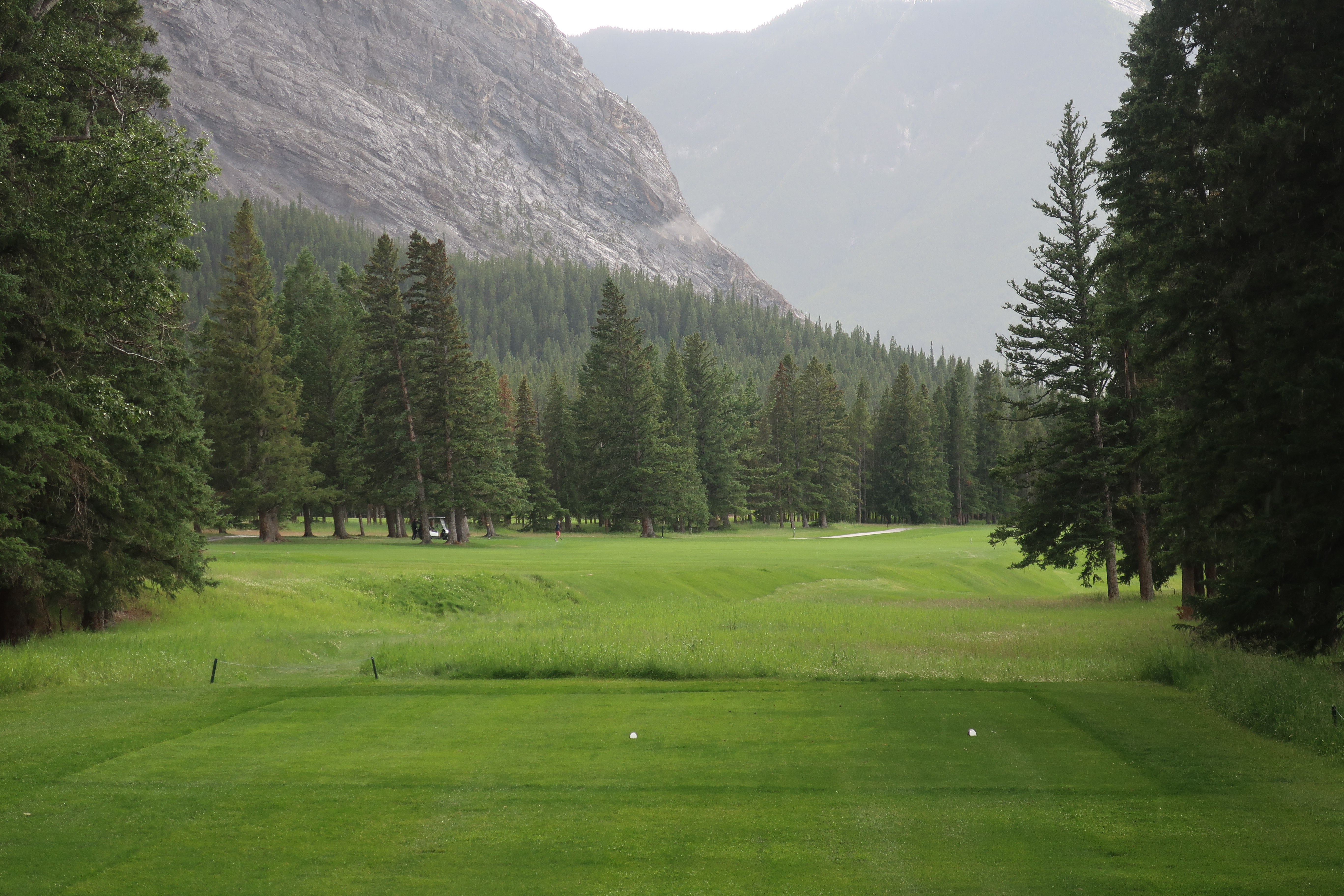
The genius of this hole is how hard the green slopes towards the water and bunker, right. If the player bails out left (and you could still be in the fairway), you’re left with a longer second shot going for the green to a downhill slope that always seems to kick hard towards the back right. If you hug the right side, you have a shorter club into a flatter angle into the green, but the green contours are so severe that nothing is guaranteed here. There’s a reason this hole is called “Jinx!”
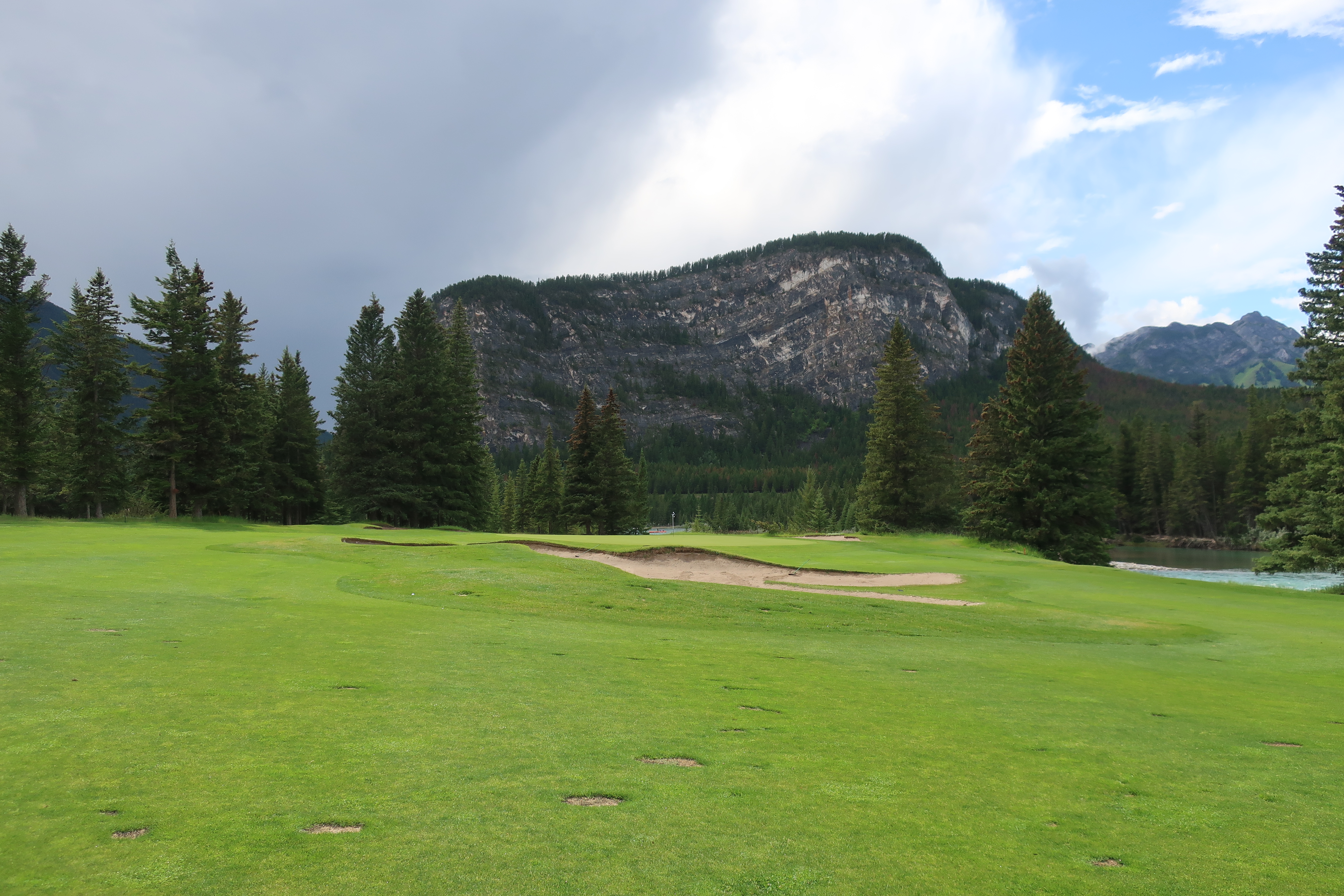
After the 9th, you make way to the 218 yard par 3, 10th, starting one of the toughest 9’s I’ve played. The front at Banff is pretty easy, outside of 4 & 5, and you can make eagle on all three par 5’s, so seeing a good score on the front is not shocking. A good score on the back, however, is a different story, and it starts with the 10th. With the bow river in play right and short right, it’s basically a longer version of hole 8. The green features a ridge in the middle, separating it into left and right sections. A bunker short left slopes hard towards the green.
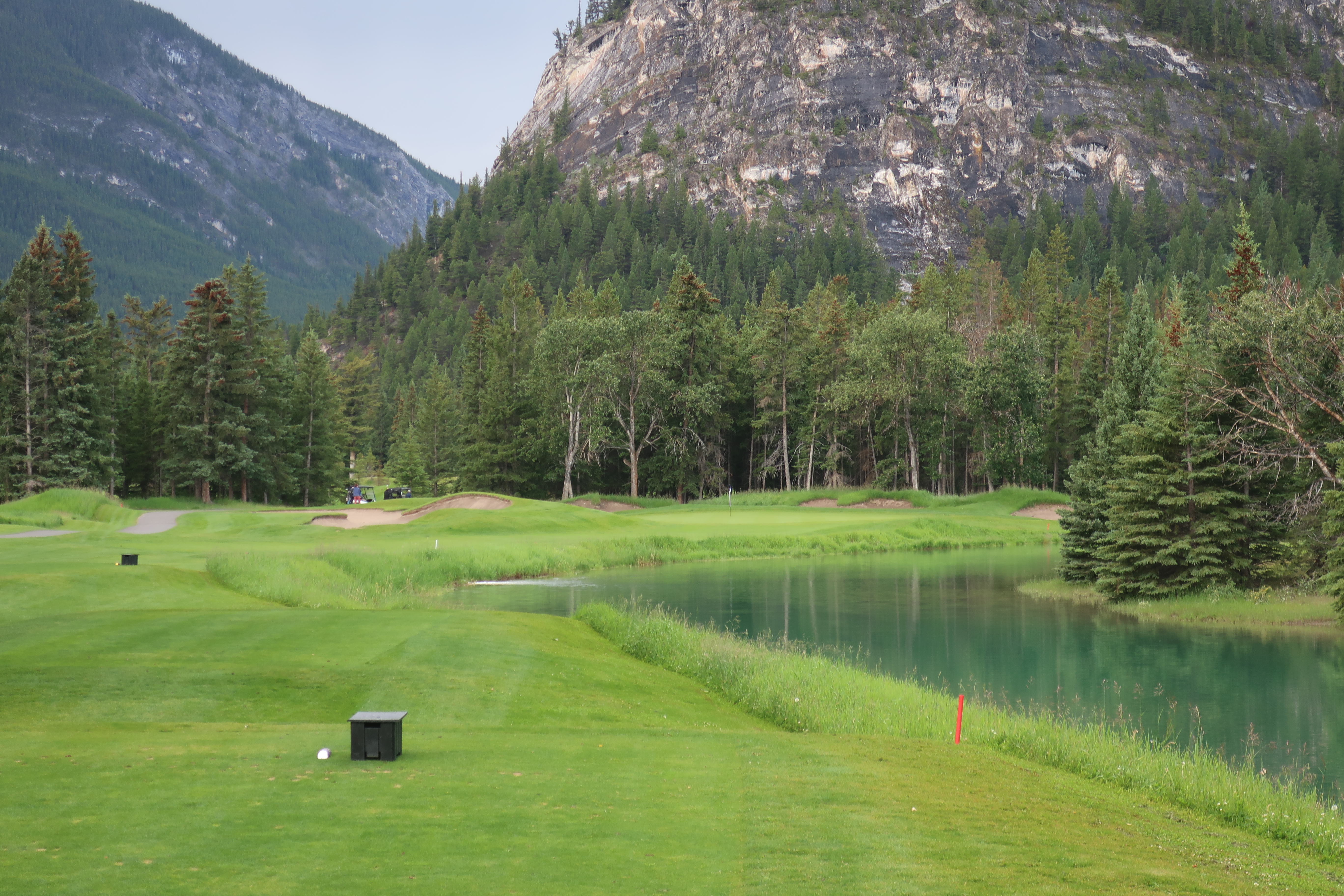
The 11th starts a four hole stretch that usually plays straight into the prevailing wind. 417 yards on the card isn’t overly long, But bunkering left and right in the landing zone makes this a difficult tee shot.
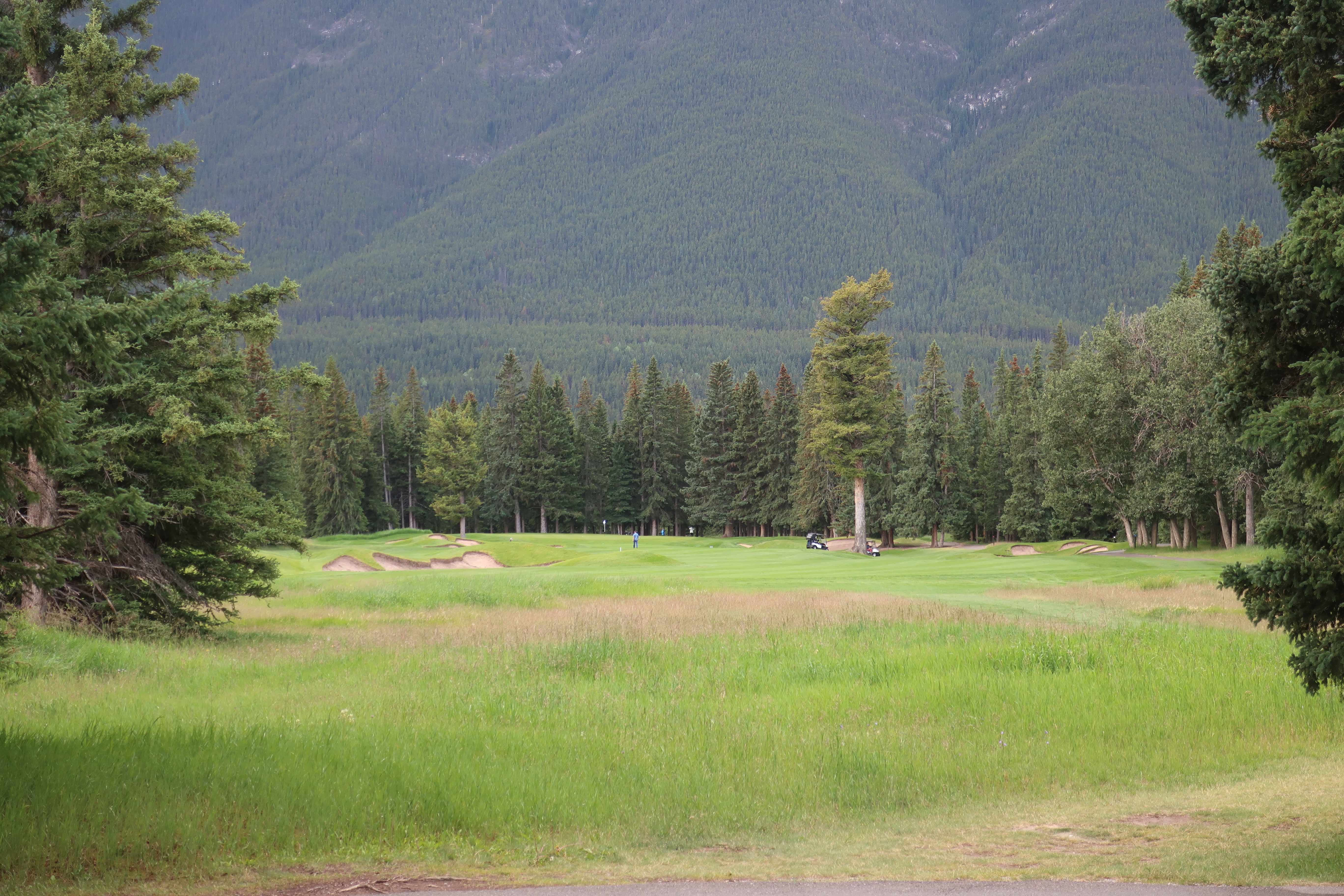
The coolest feature of this hole is the massive swale short of the green that you can’t see from the fairway.
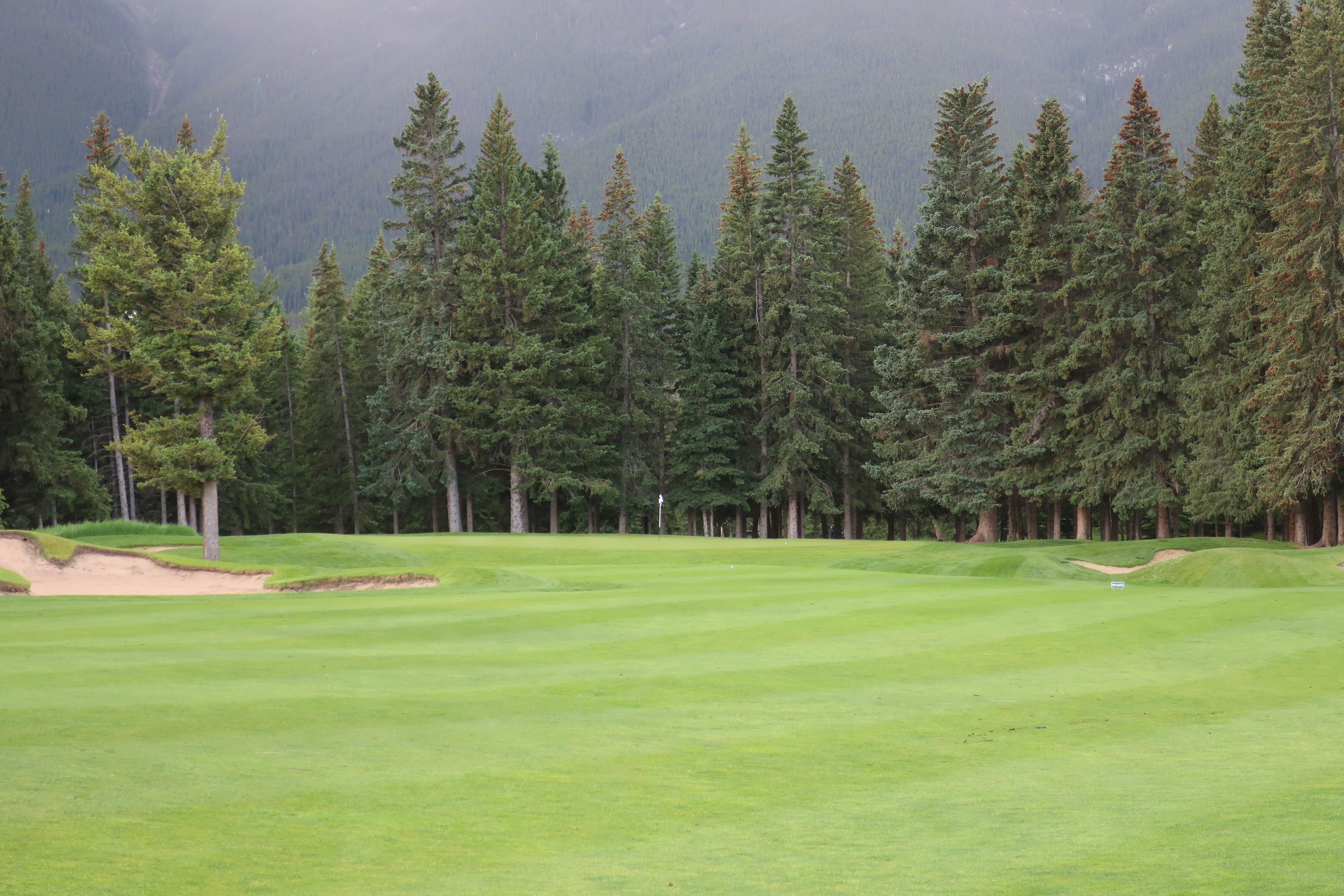
It looks like you’re able to run up the ball, and back in the day I’m assuming you needed to depending on the wind, only to be greeted by your ball short because it landed into an upslope. A fantastic little design feature.
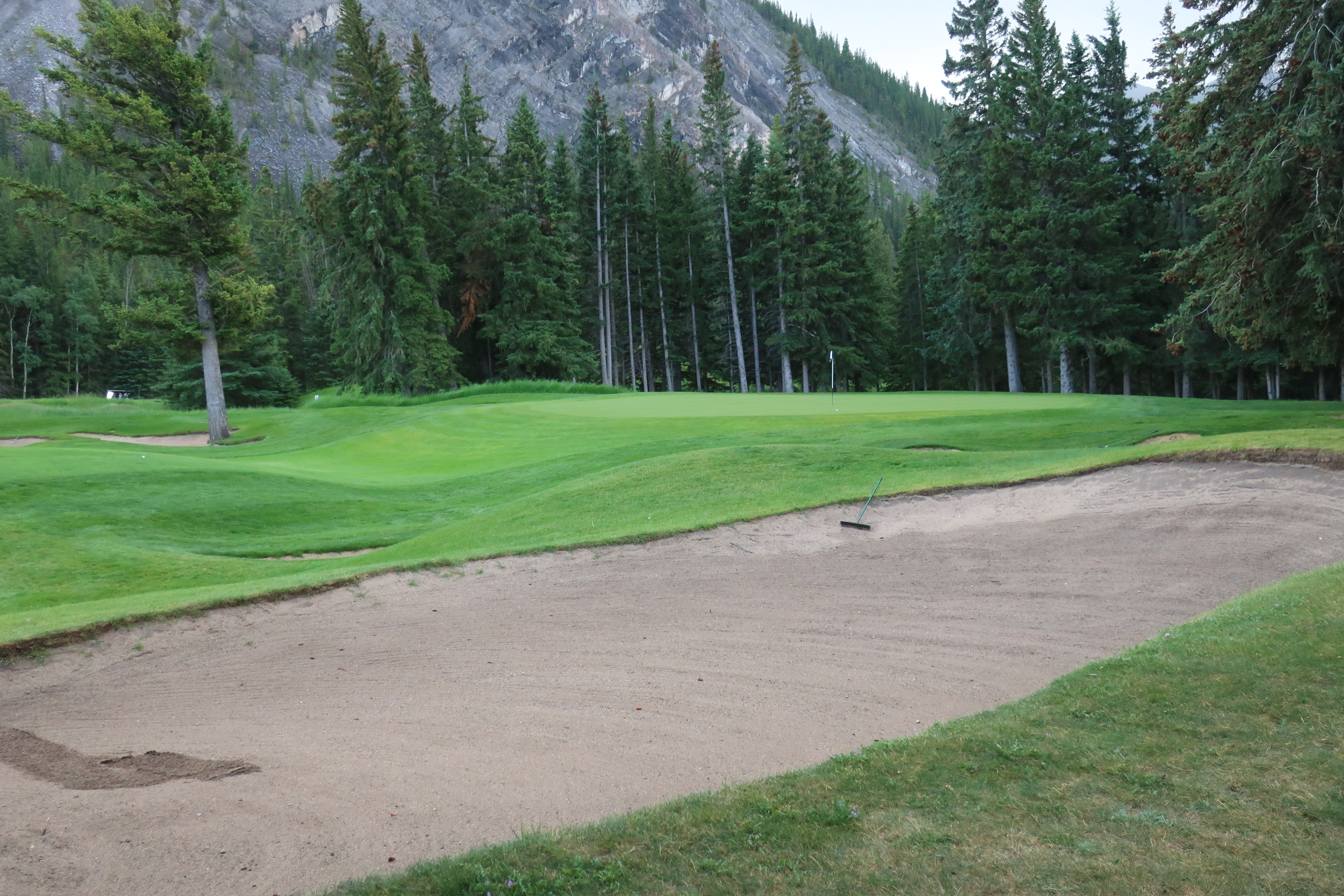
Hole 12 is a little longer par 4 at 442 yards, still playing into the wind, with two bunker complexes on the left side of the hole.

The Bow River decides to come back into play here for the final time, running down the entire right side of the hole.
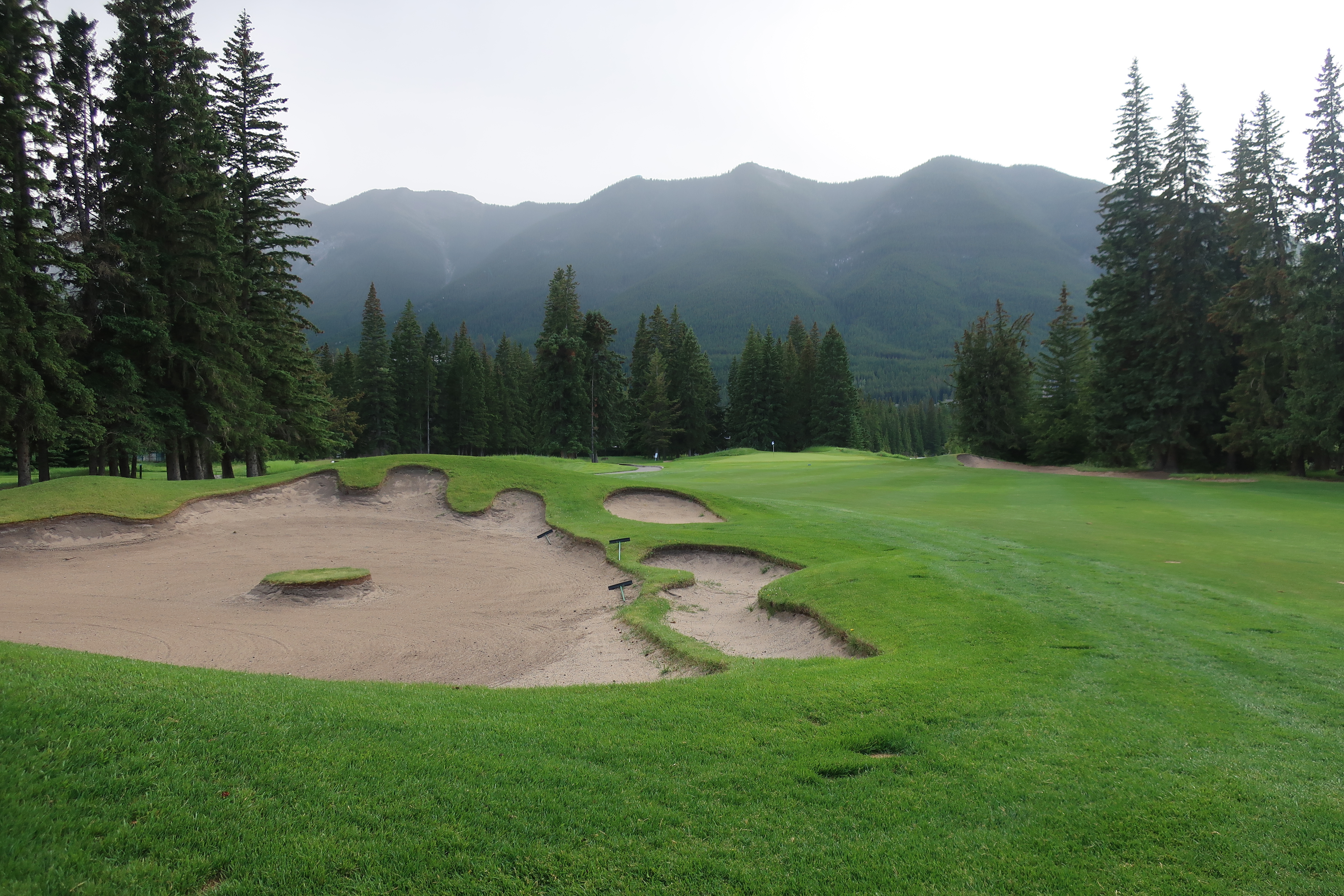
The hole features a really cool green complex, with a back tongue sandwiched between a very penal bunker left and the Bow River right. The front is completely accessible, however, so you can always just hit it to the middle and putt it up. I’ve played numerous tournaments here and every year they put the pin in the back and it makes for some interesting shots late in the final round.
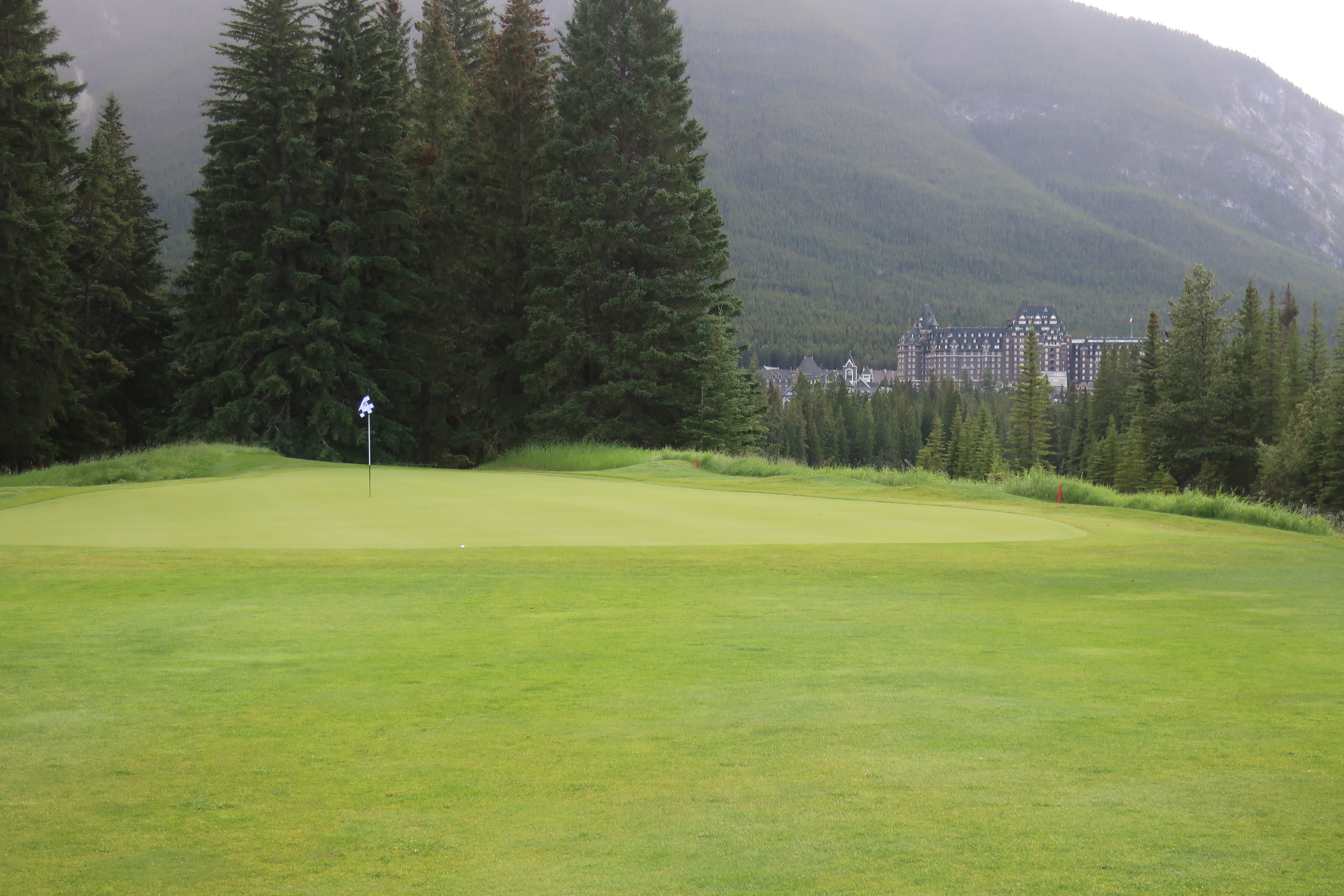
From behind the 12th, you can see the green complex.

The 13th continues the incredibly difficult stretch that started at 10. The final par 3 of the round, featuring the same design feature on the green as 12 with that back tongue (sans Bow River, however), the hole plays a stout 225 from the back deck.
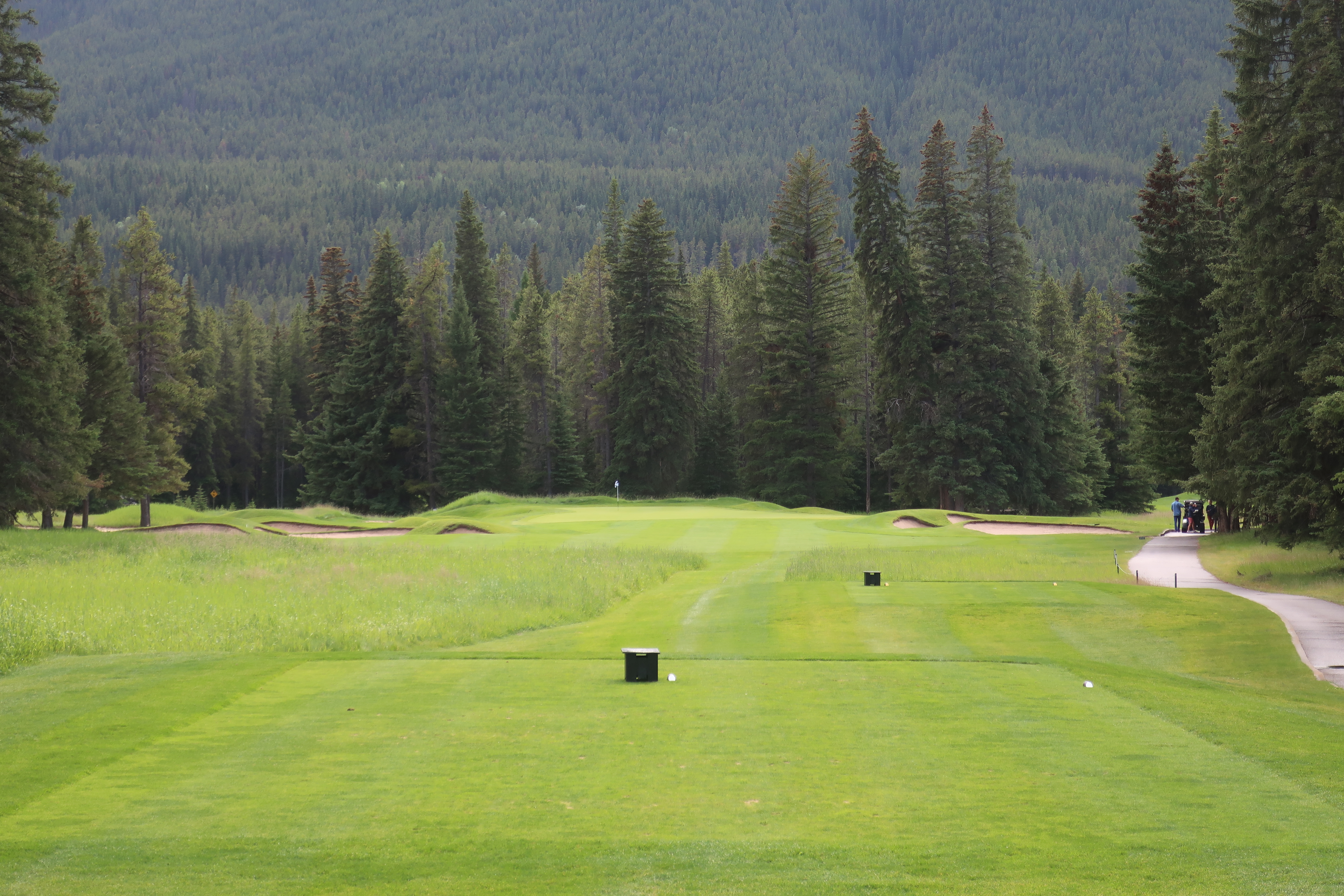
Again, a cool design feature where the green narrows to the back.
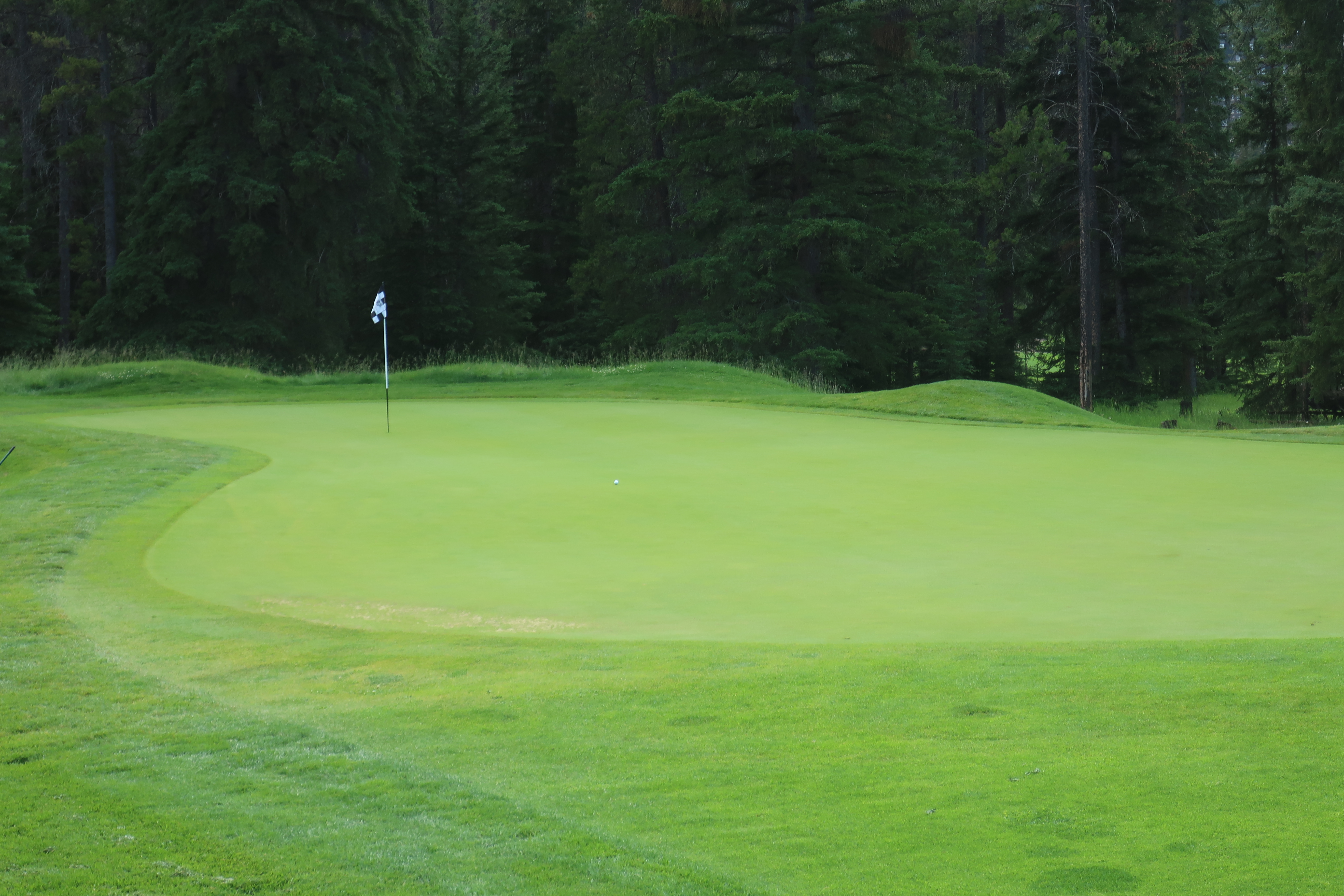
The 14th is a 440 yard par 4, with what feels like 100 bunkers on the hole. In reality, it’s closer to 15, with about 8 of those green-side, but that’s still 7 to navigate on this difficult, into the wind tee shot.
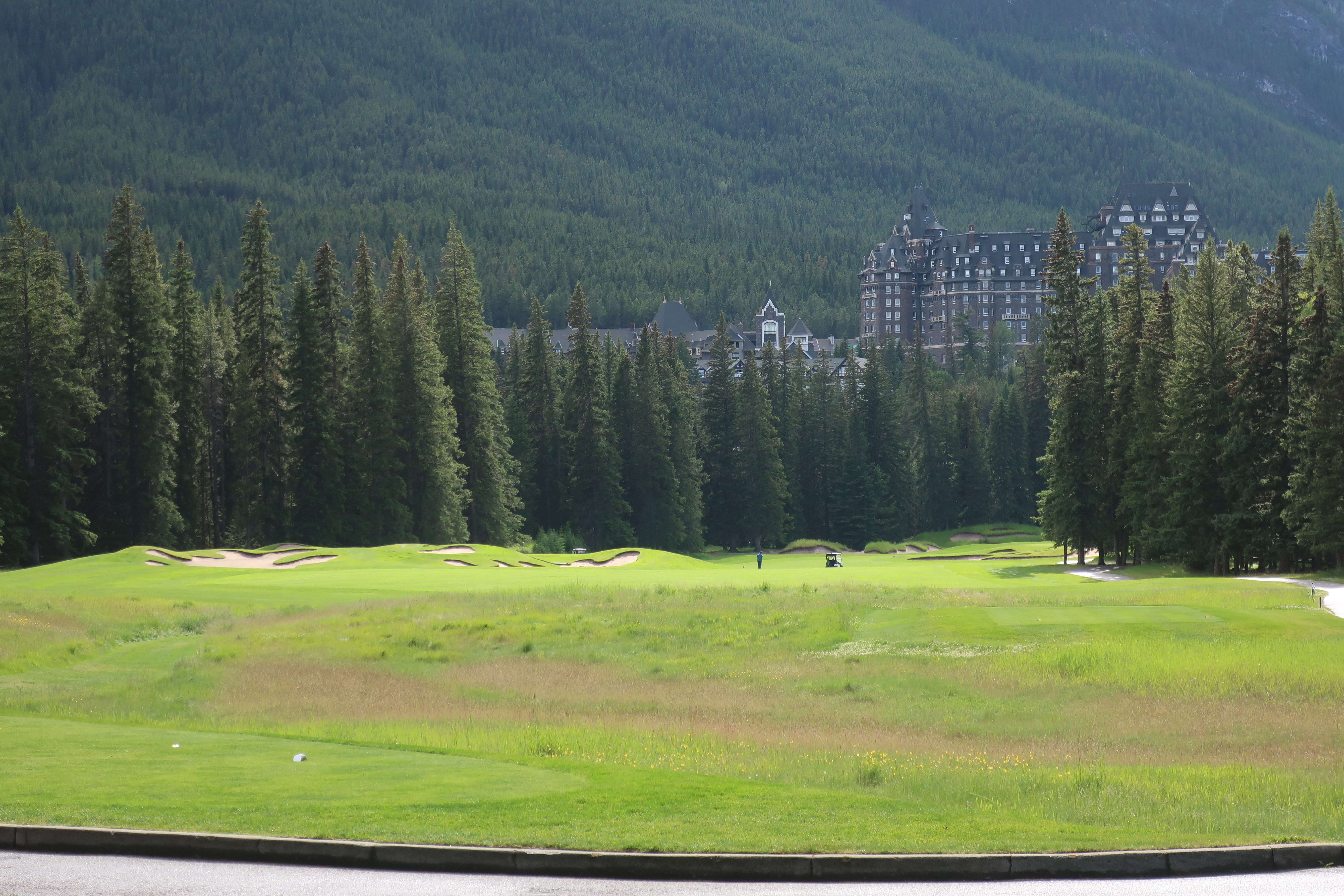
It’s hard to ignore how good the bunkering on this hole is. I’m pretty sure this is my personal favourite hole in Alberta, and maybe even Canada as of July, 2019.
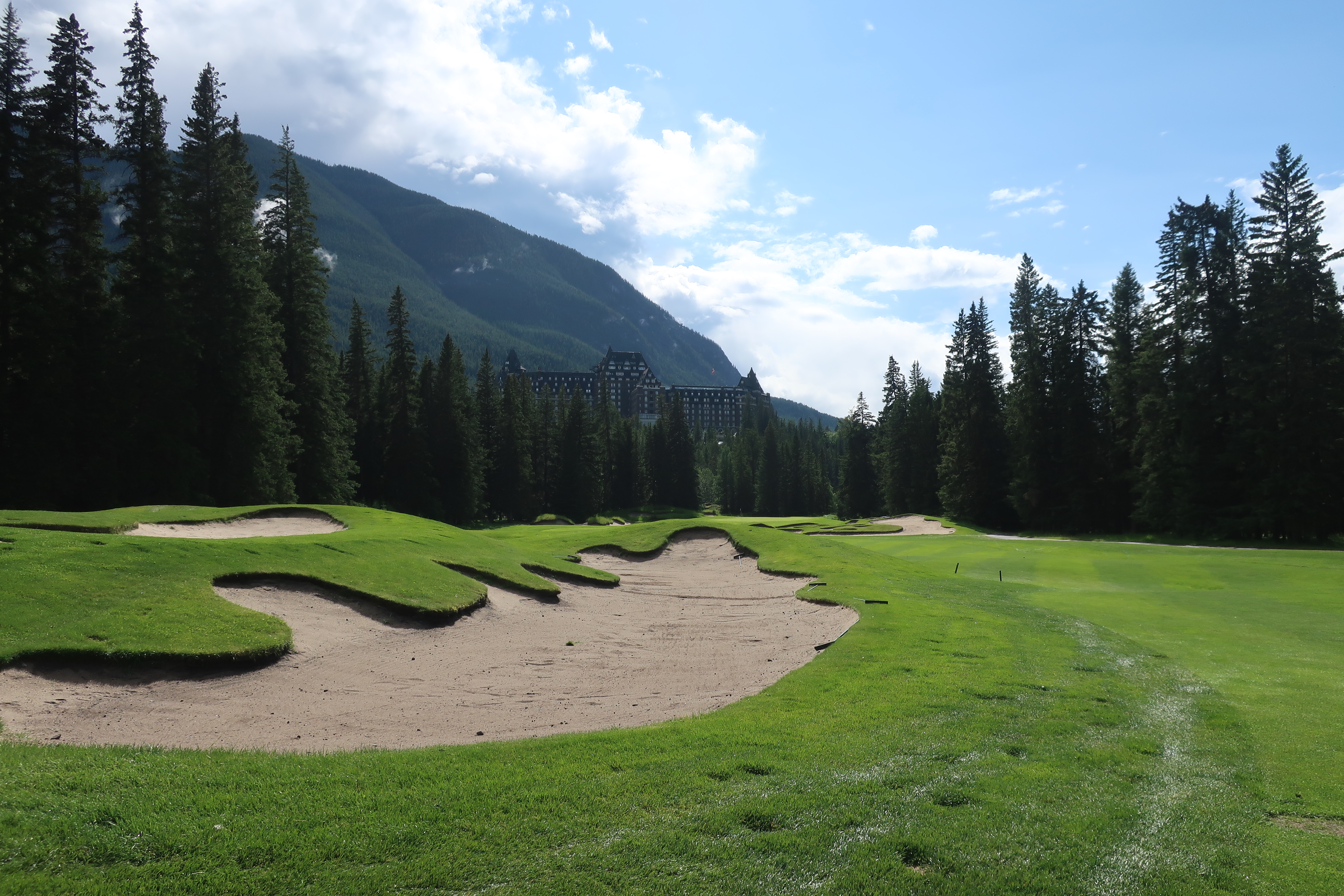
The approach shot here, with The Fairmont Banff Springs in the background, is pretty darn good, too.
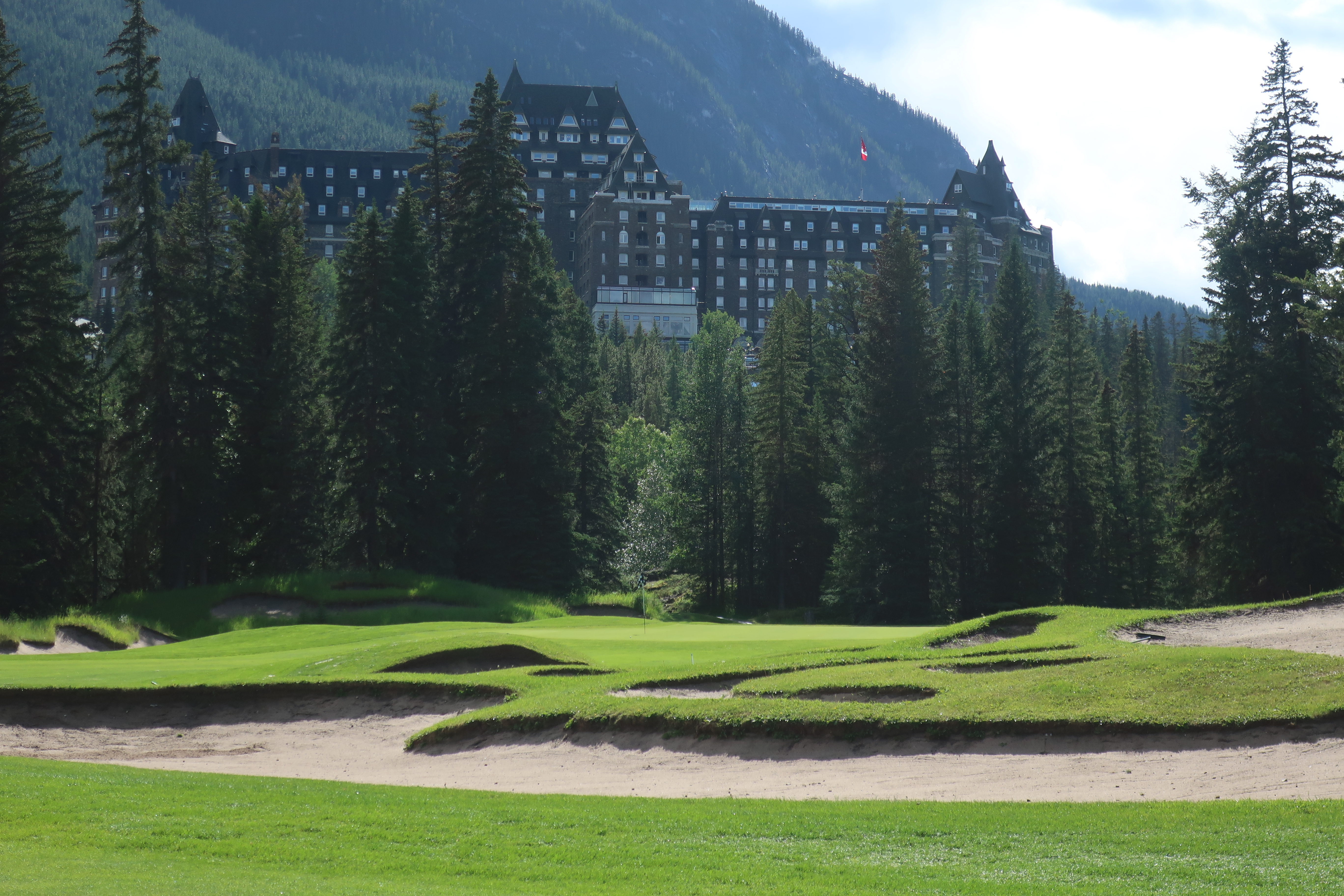
After finishing 14 and on your long walk to the 15th tee, you realize how good of a finishing stretch 10-14 would’ve played. You have birdie opportunities on 6, 7, 8 and 9, but 10, 11, 12, 13 and 14 are all “hang on for dear life” holes, all playing into the normal wind. It would’ve been an absolute race to get in with a good score.
The 15th, 475 yards as a par 4 (!), plays from a very high, elevated tee. This is the original starting hole, and would’ve been the best opening tee shot in golf.
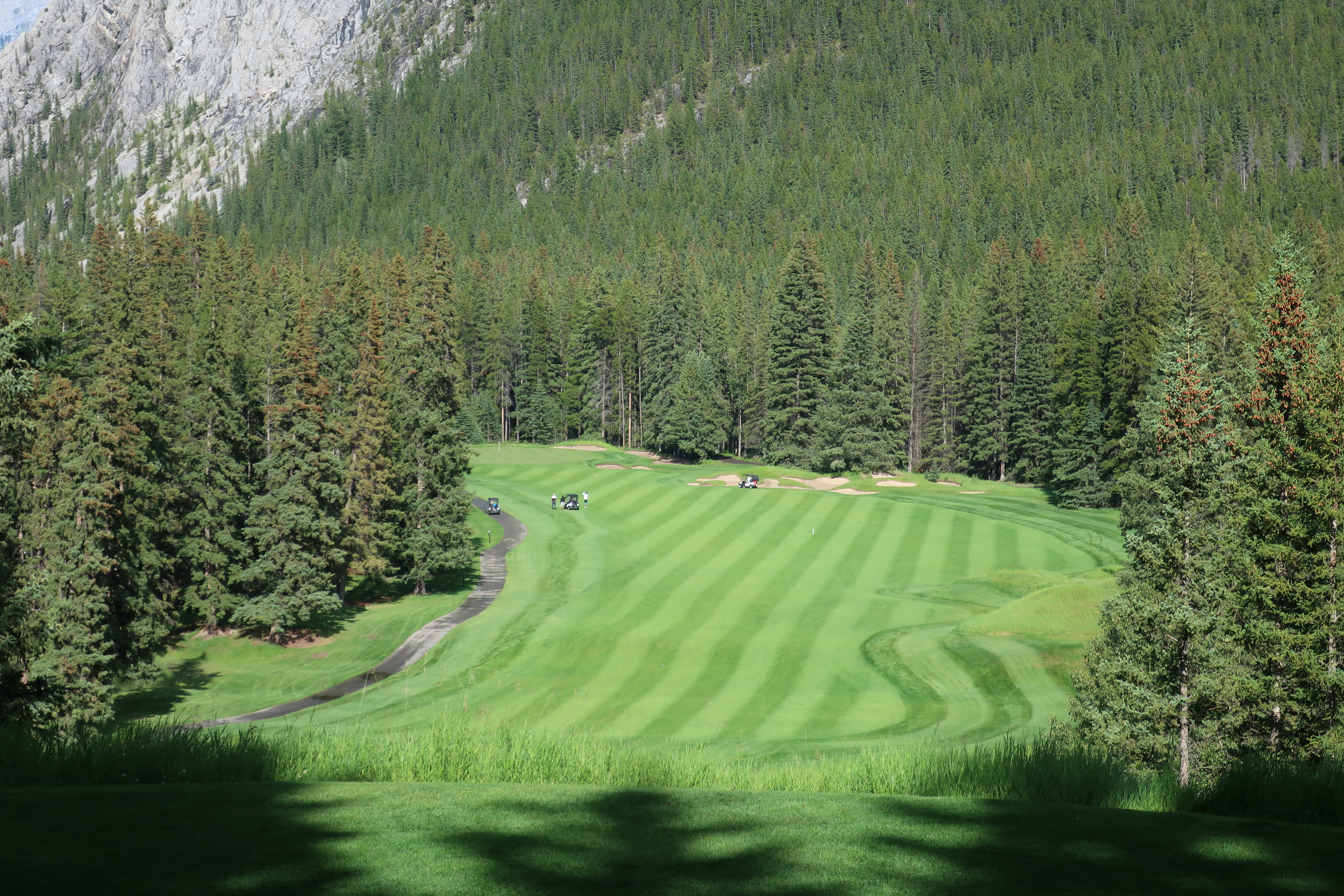
The approach is fairly benign, open for a running shot as a good long par 4 should.
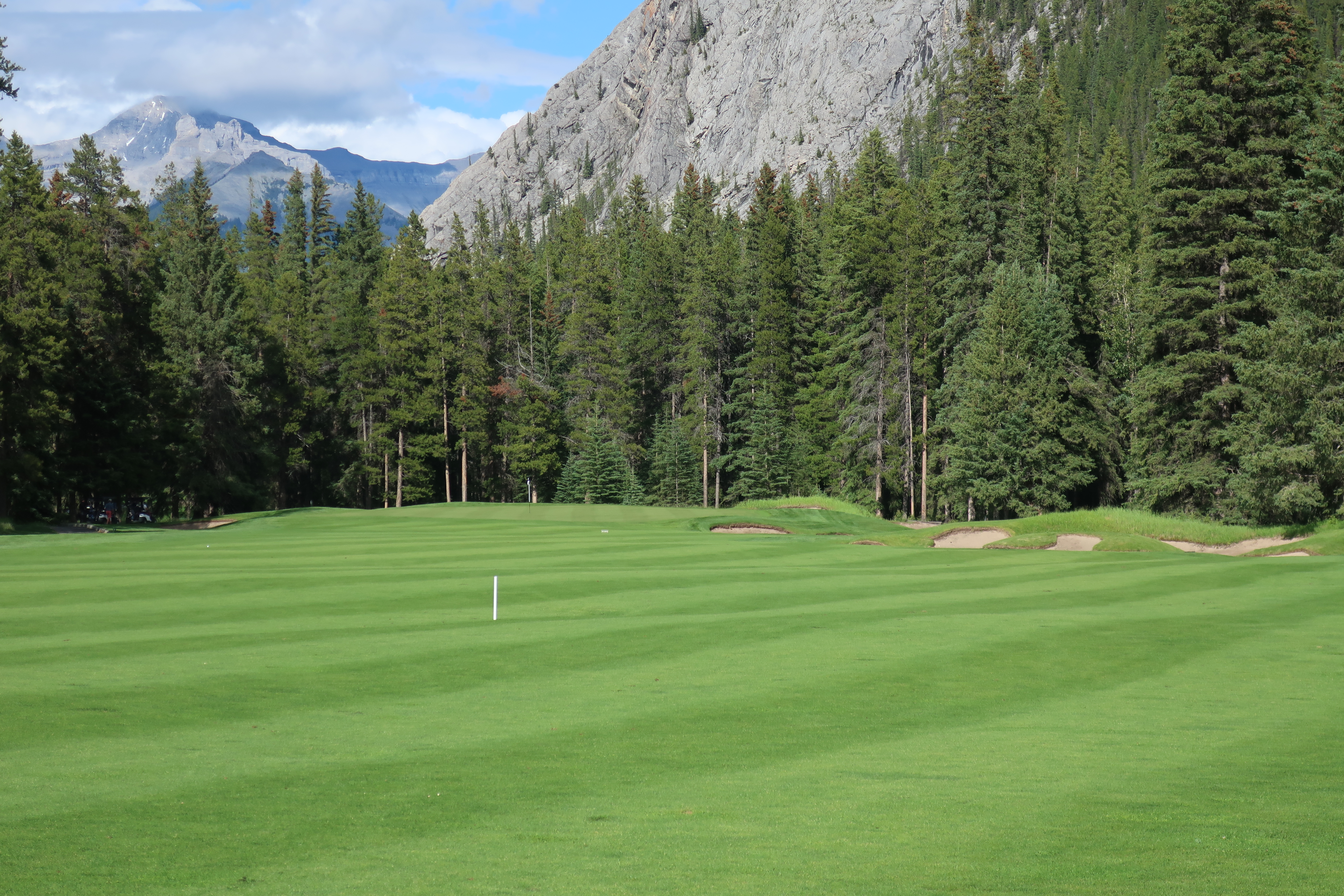
And once again, some fantastic bunkering up the right side.

The 16th is deceptive, with a bunker 211 carry off the tee, and then bunkering 320 off the tee, it looks like it blends in together.
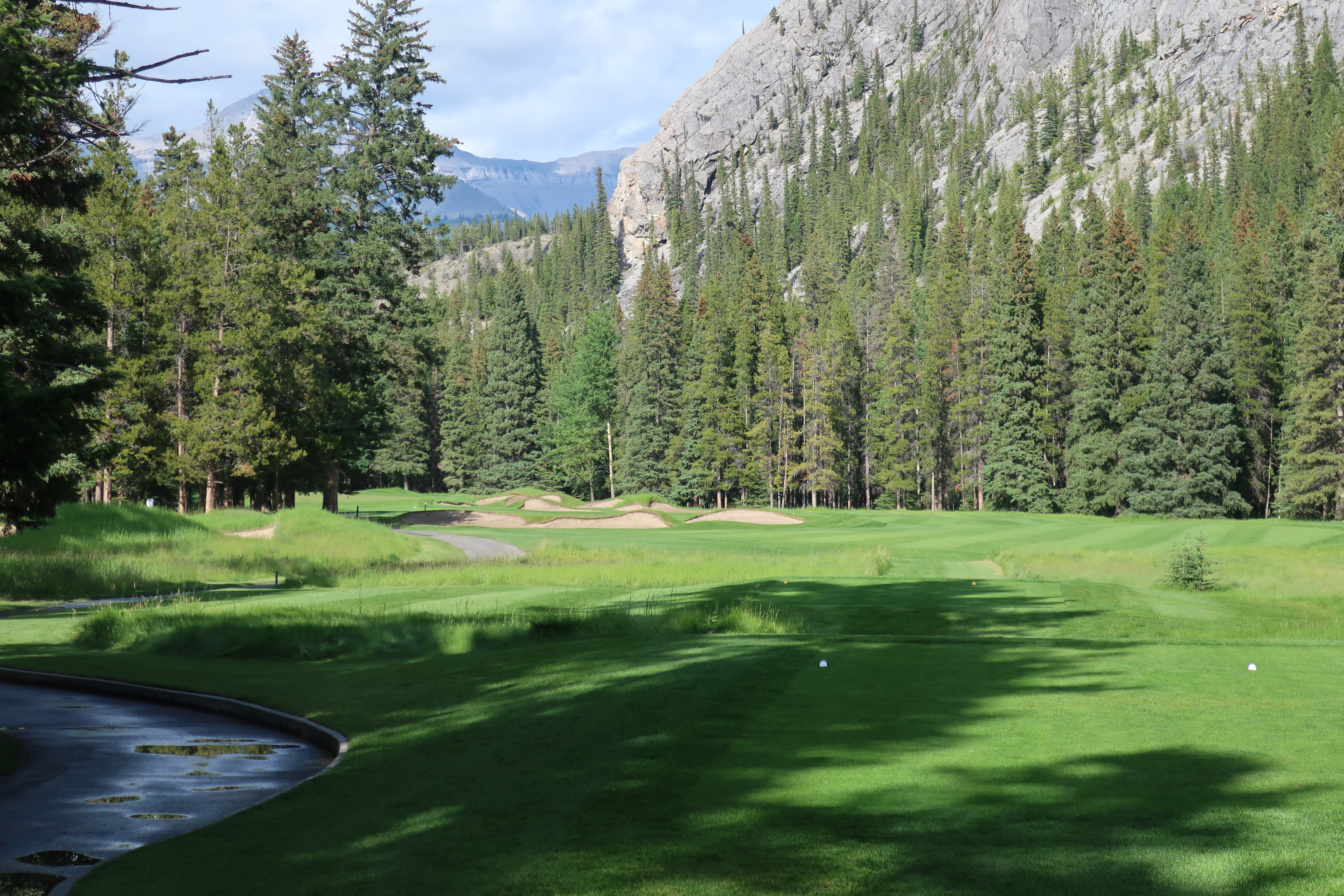
The green here is one of the most intense on the golf course, with the front edge having about 11 degrees of slope.
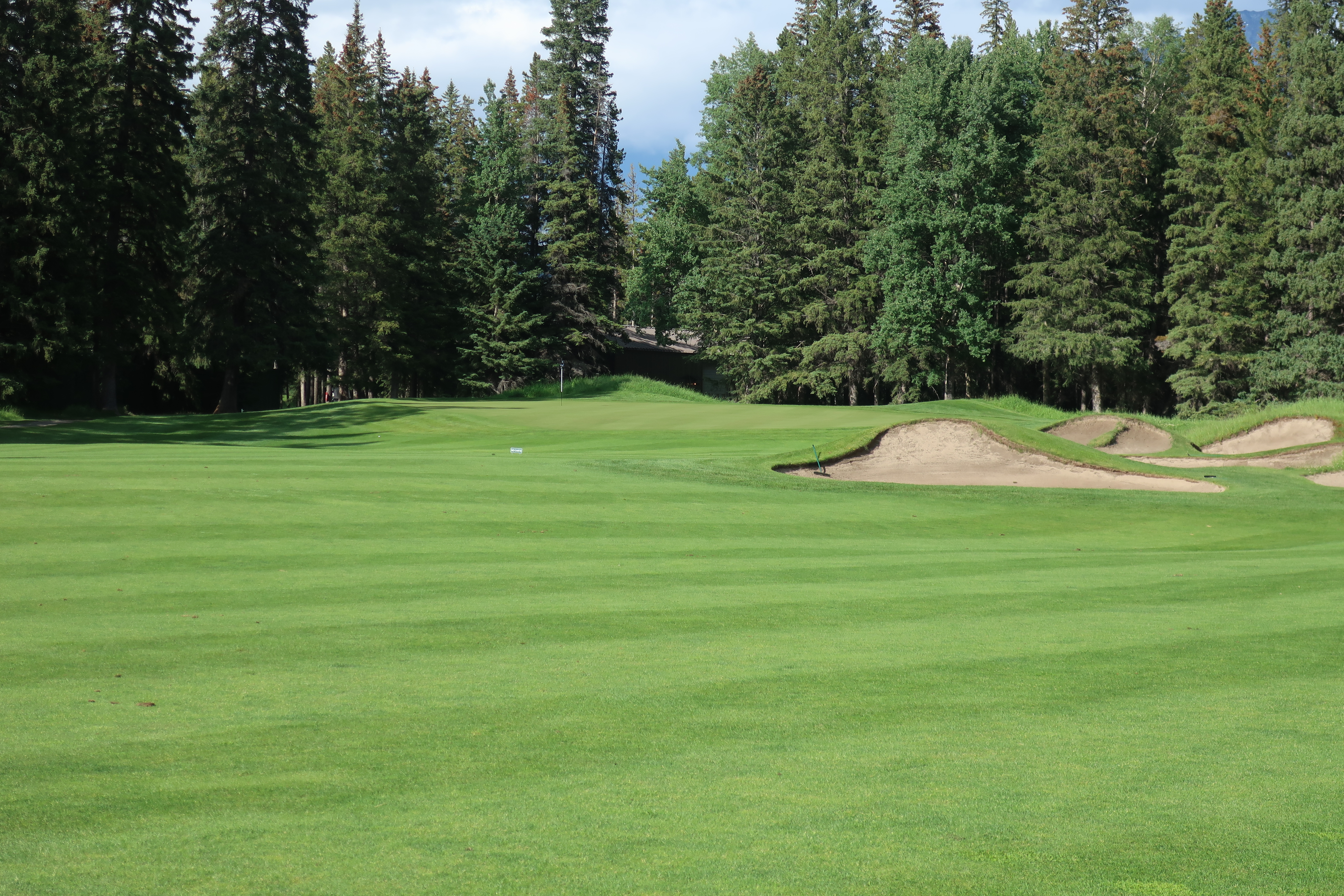
The 17th is a short par 4 at 374 yards, ever-so-slightly moving to the left. The tee shot is ideally with a club less than driving so you don’t bring the bunkering in play and leave yourself with an easy wedge.
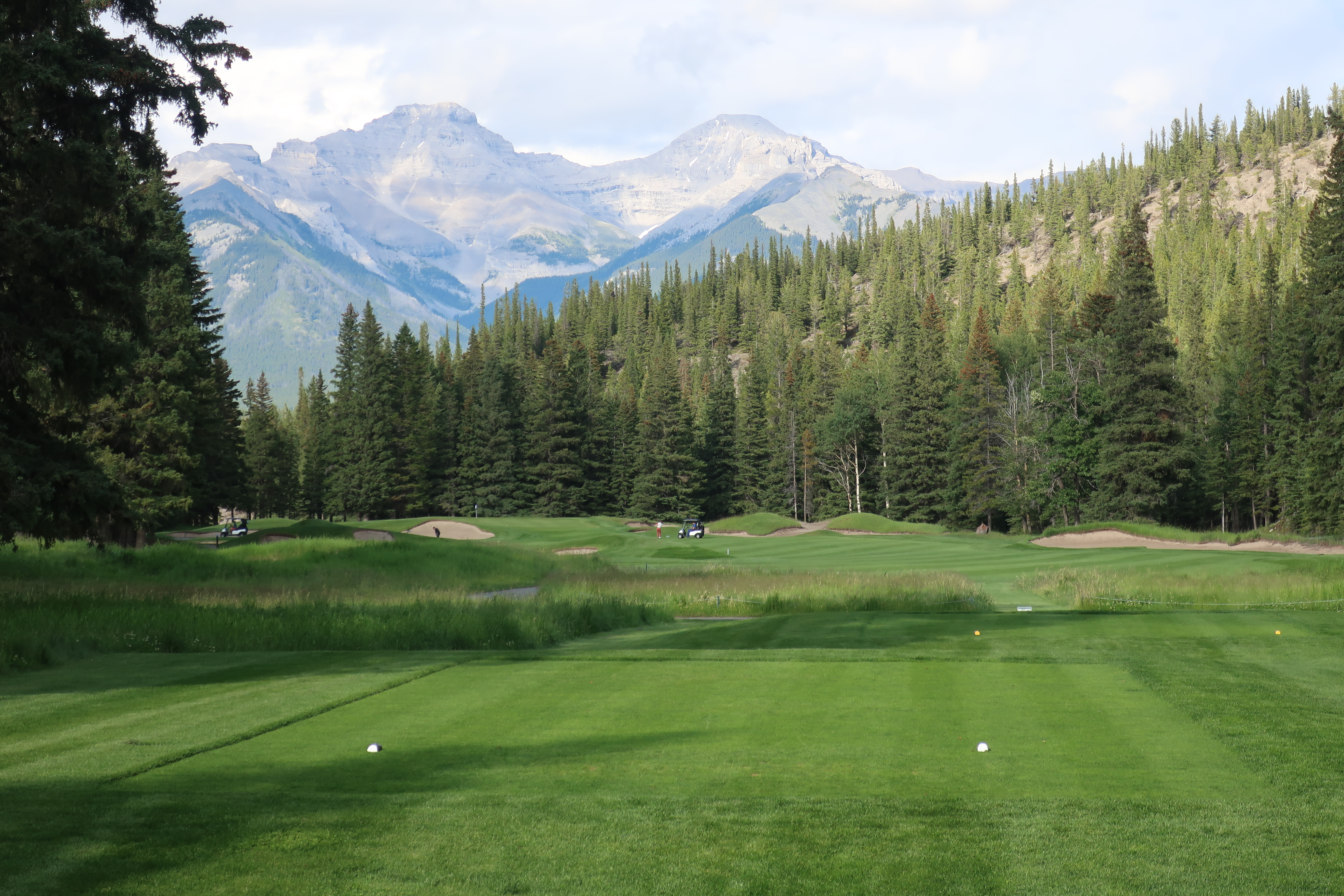
The approach shot is fairly normal, with a big bunker short left and some nice movement in the green complex.

The 18th is a fantastic hole, handicapped by the fact that they built the new clubhouse in an awkward location, so the entrance road is on the inside corner of the hole tee-to-green. Long hitters literally hit it right over cars heads to cut the corner of the sharp dogleg right to get home in two on the 578 yard par 5 closer.
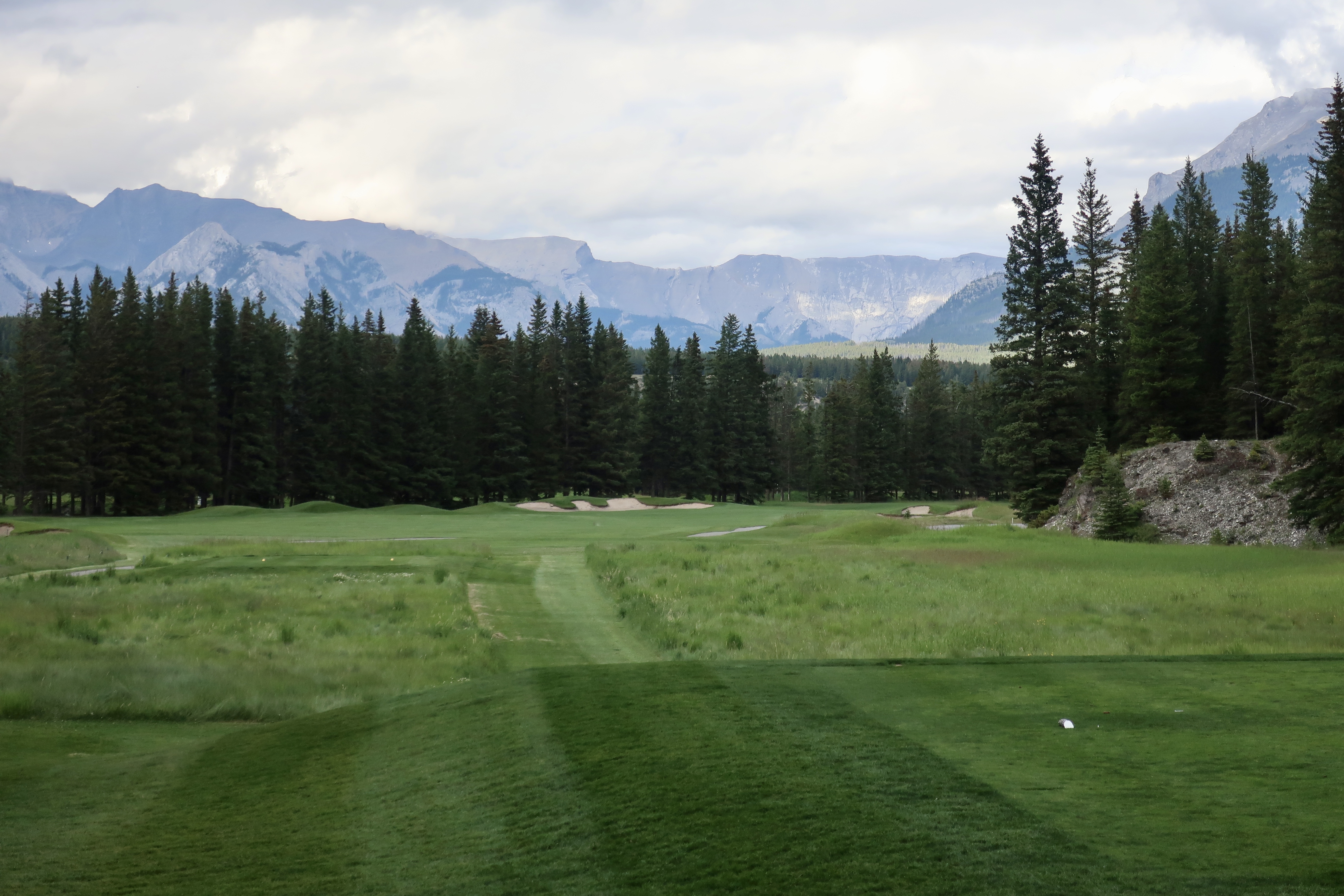
Note: there is a lot of bunkers on this hole.
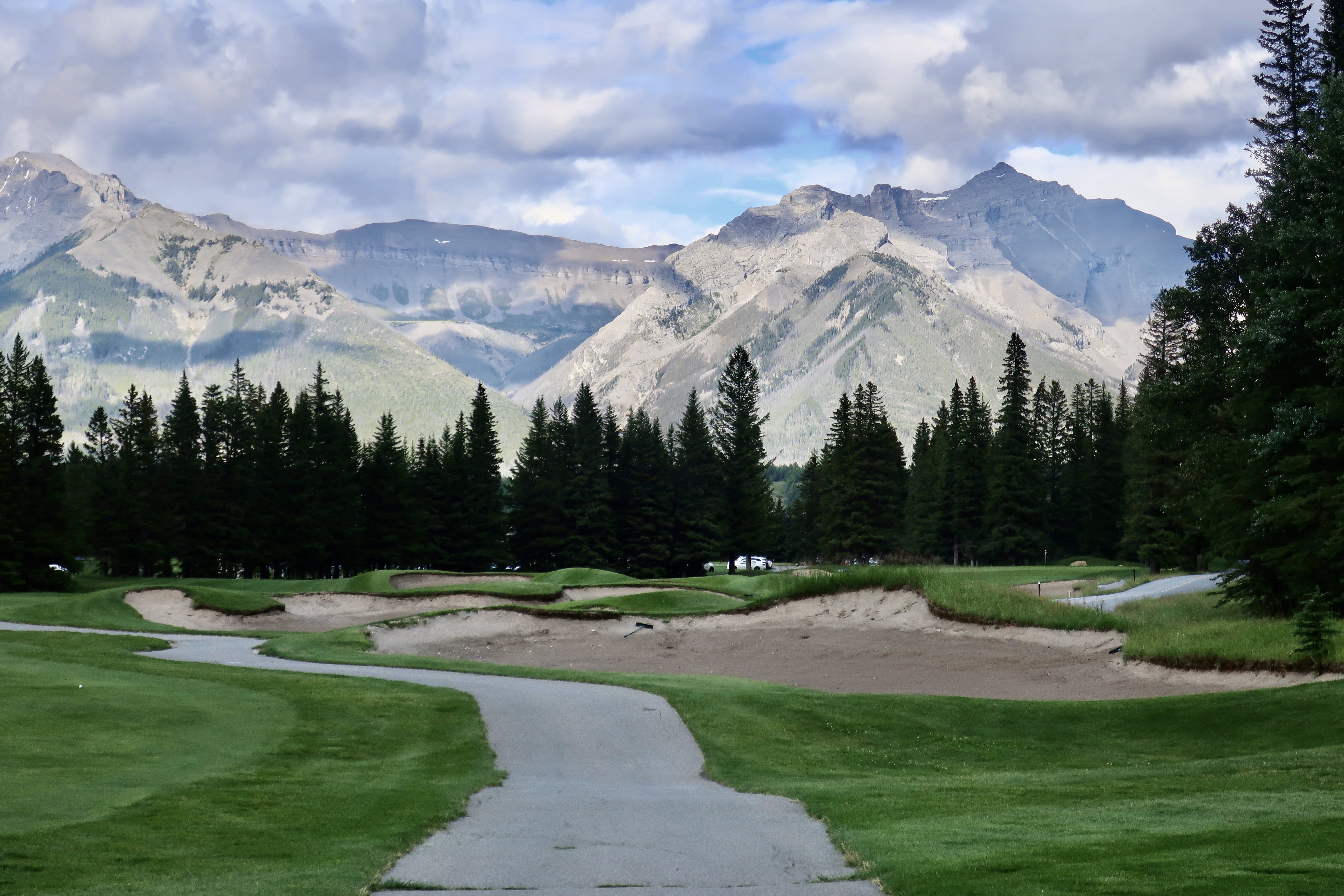
This is one of the only holes I’ve played where the layup is as difficult as going for it. Three massive bunkers are in the landing zone starting at 120 yards and ending around 80 yards out, so if you want a perfect 110, 95, whatever your number is you’re gonna have to hit a really good iron shot to stay on the short grass.
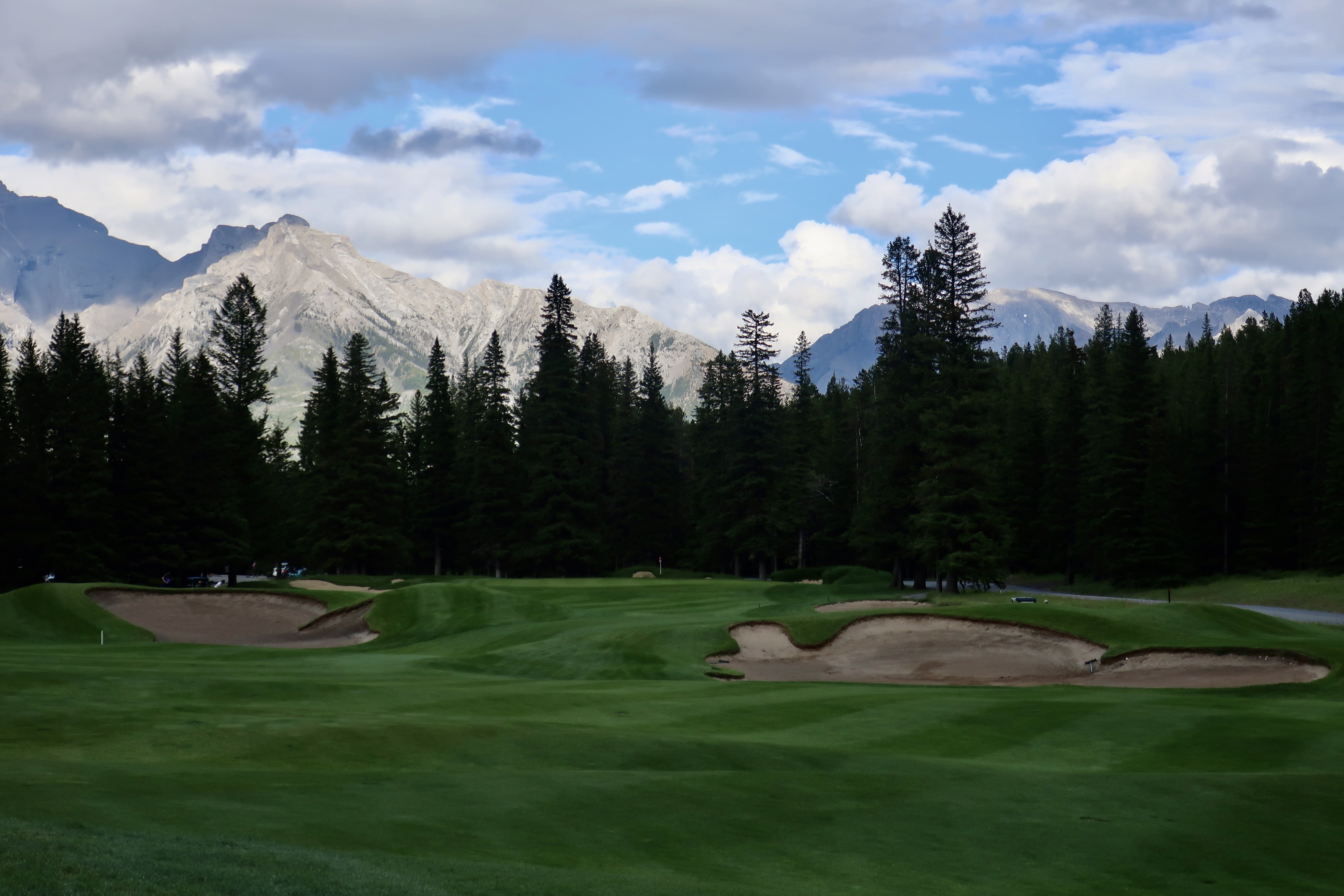
Look at how big the bunkering is in the layup, below. Right:
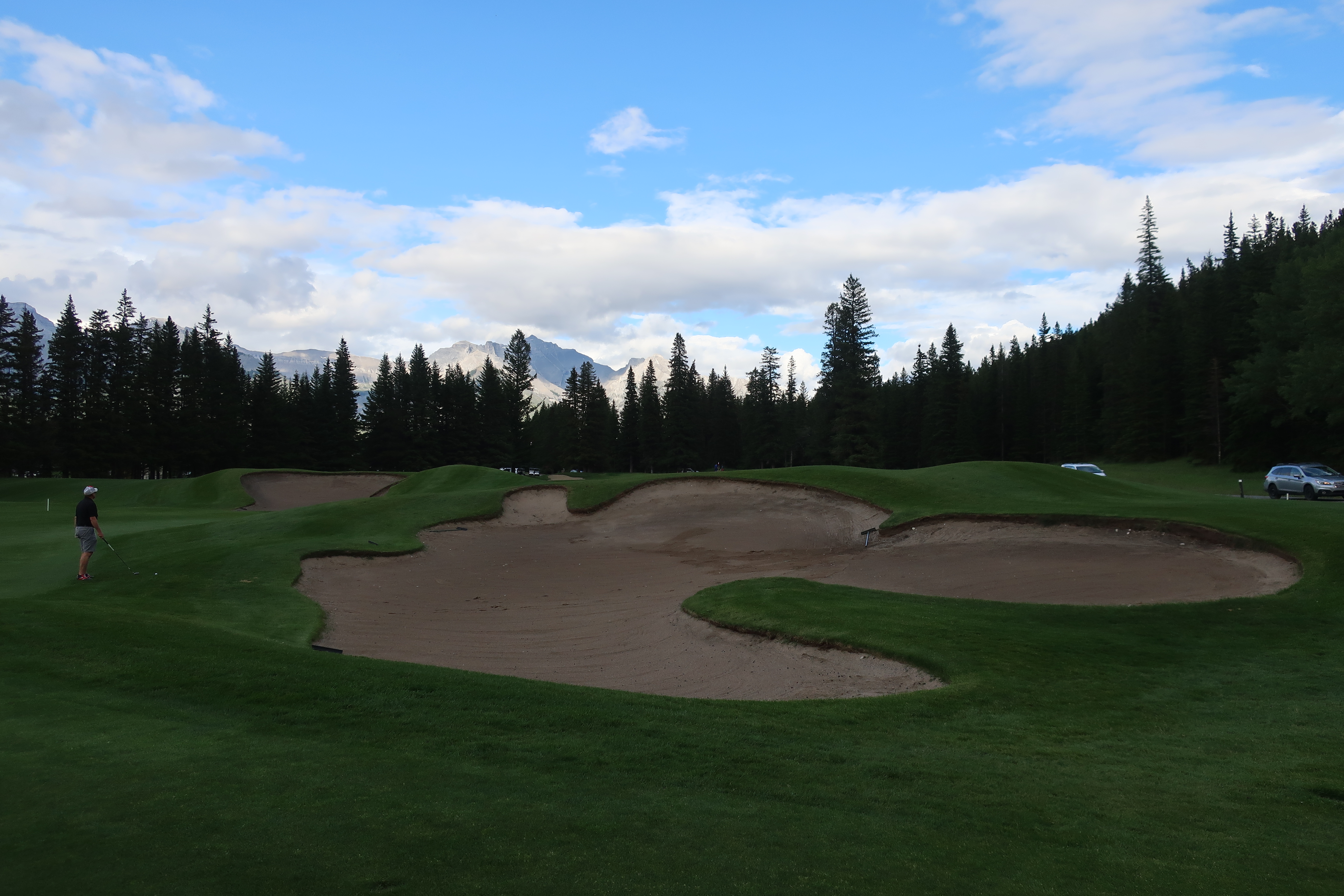
And left:
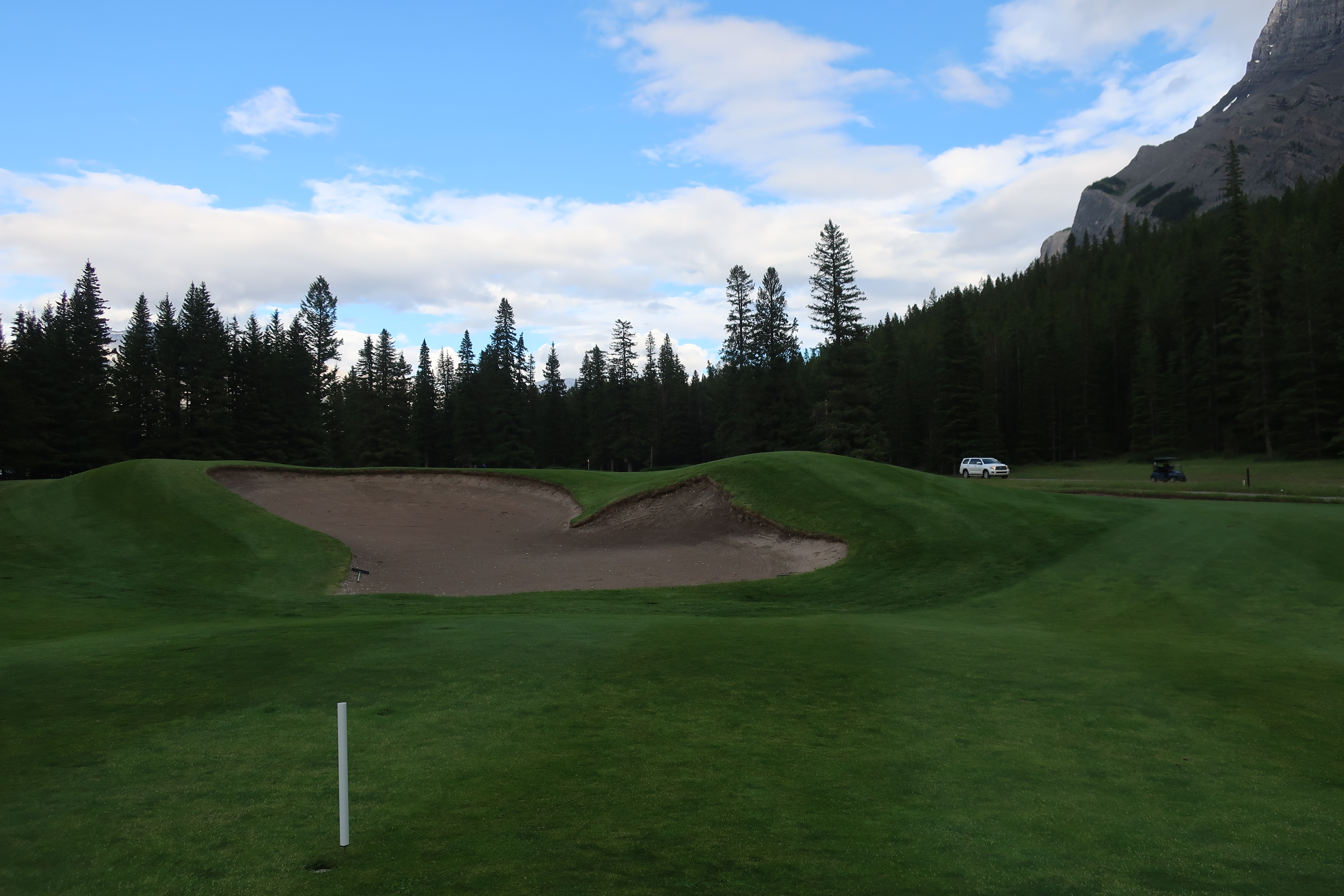
The green complex is well suited for run up shots, with only bunkering left and right, as well as OB right. A really good par 5 that’s on the short list for my favourites I’ve played.
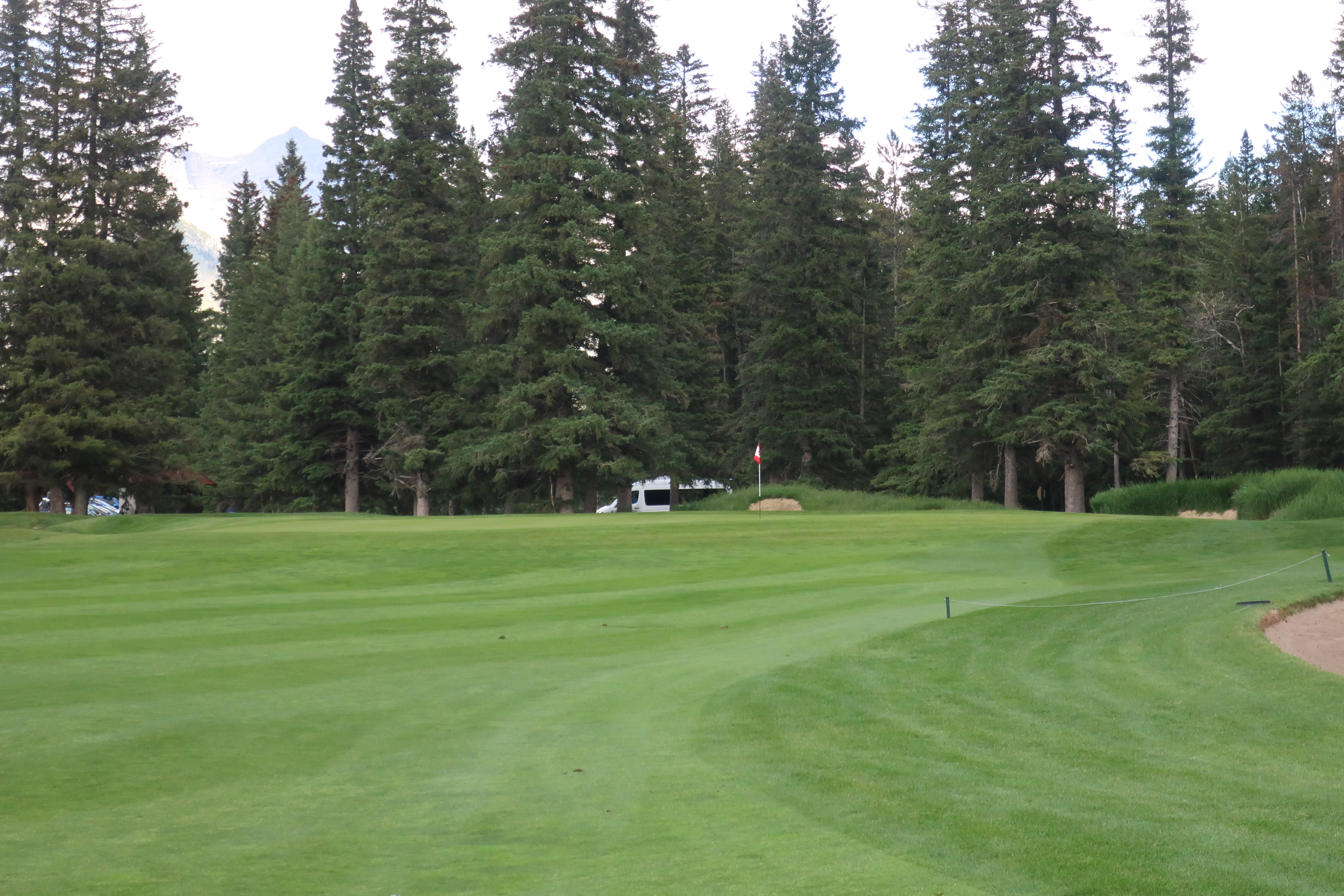
It’s hard to truly find a flaw at Banff. The only issue here is the routing, which is such a shame they relocated the clubhouse and driving range to accommodate the Tunnel Nine in the mid 80’s. The flow of the course feels off, and you don’t notice it until the 14th or so where you have to play what would be an amazing hole only for you to have a really awkward long walk back to 15, which would’ve been hole 1.
Regardless of the current routing, Banff is a spectacular golf course. The setting is unrivalled, and the quality of golf somehow lives up to that, too. I’ve been fortunate enough to play Banff numerous times, and yet I look forward, and actively think about my next round here. A trip anywhere near Banff without the inclusion of the golf course is a waste of what is one of golf’s true cathedrals.


